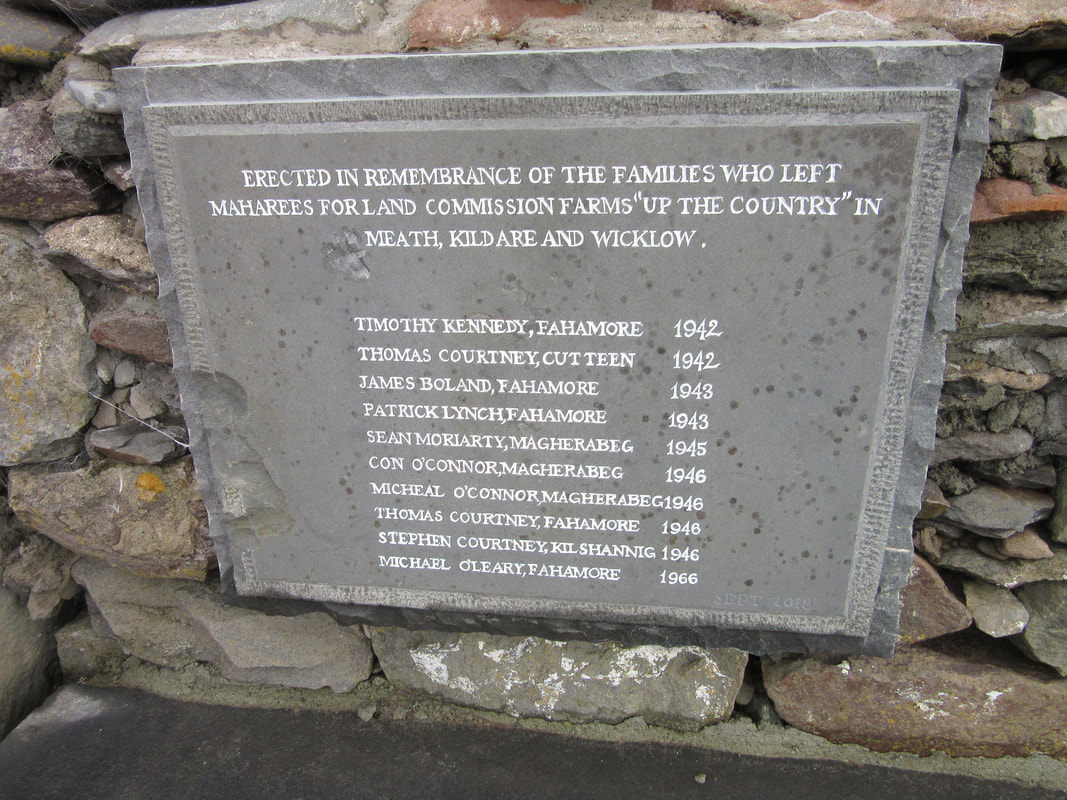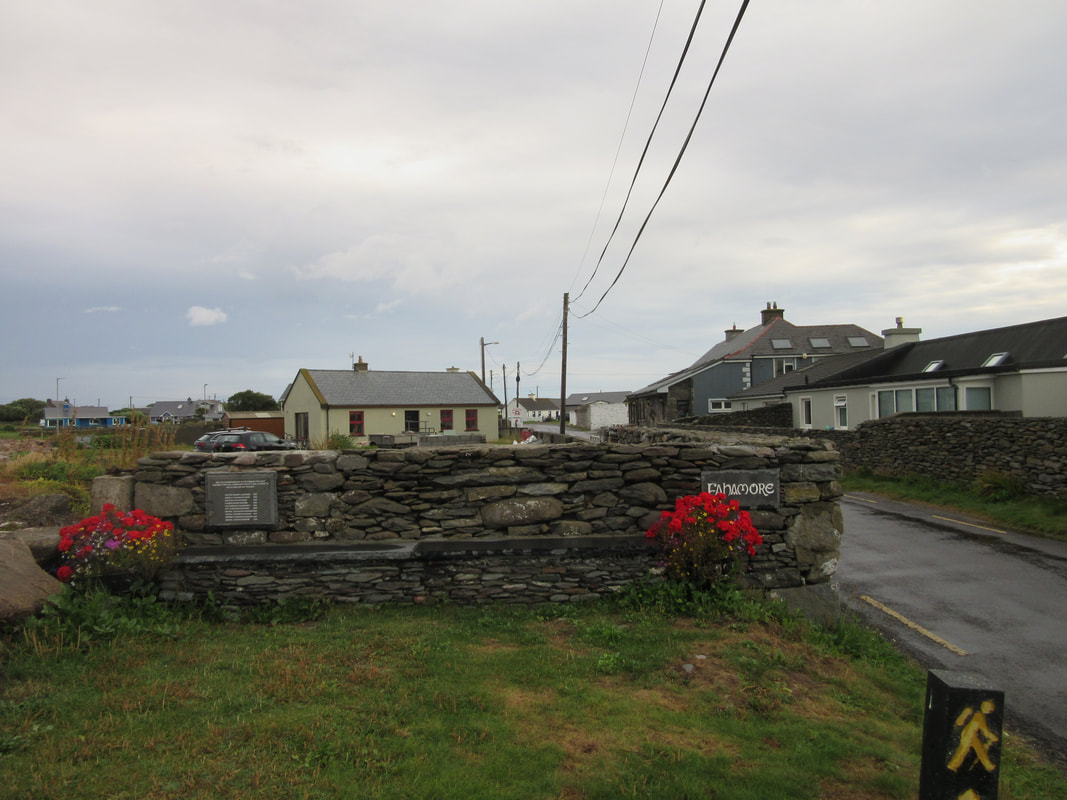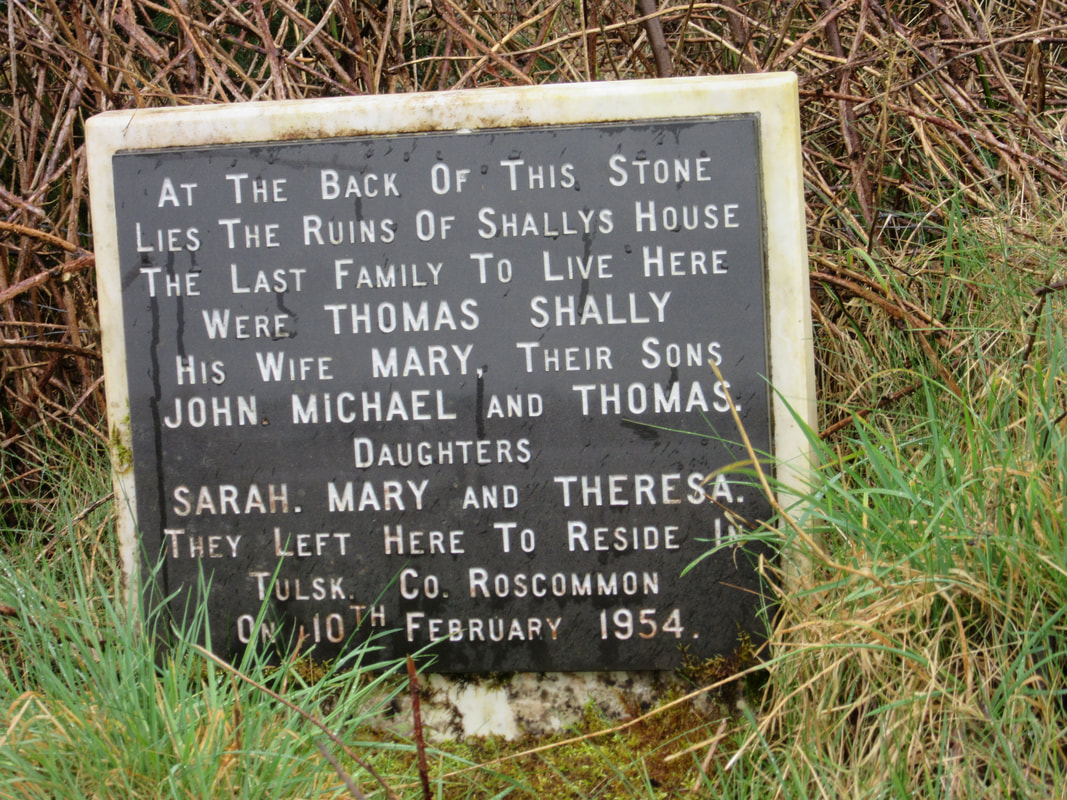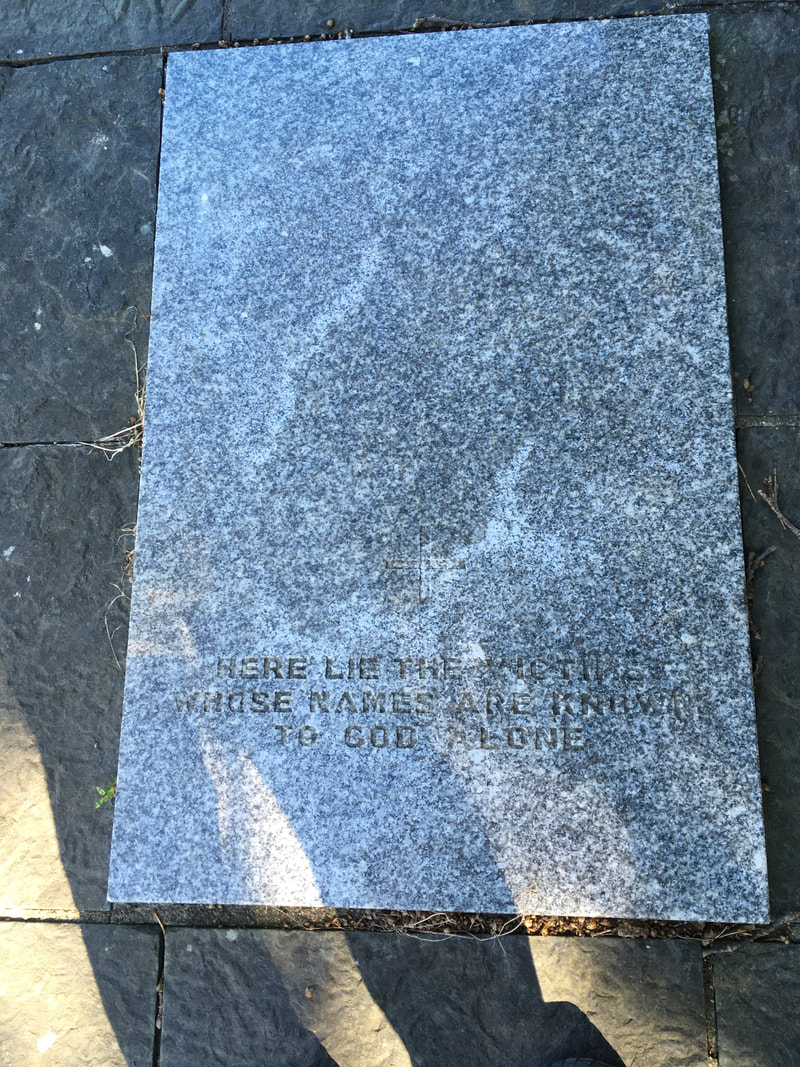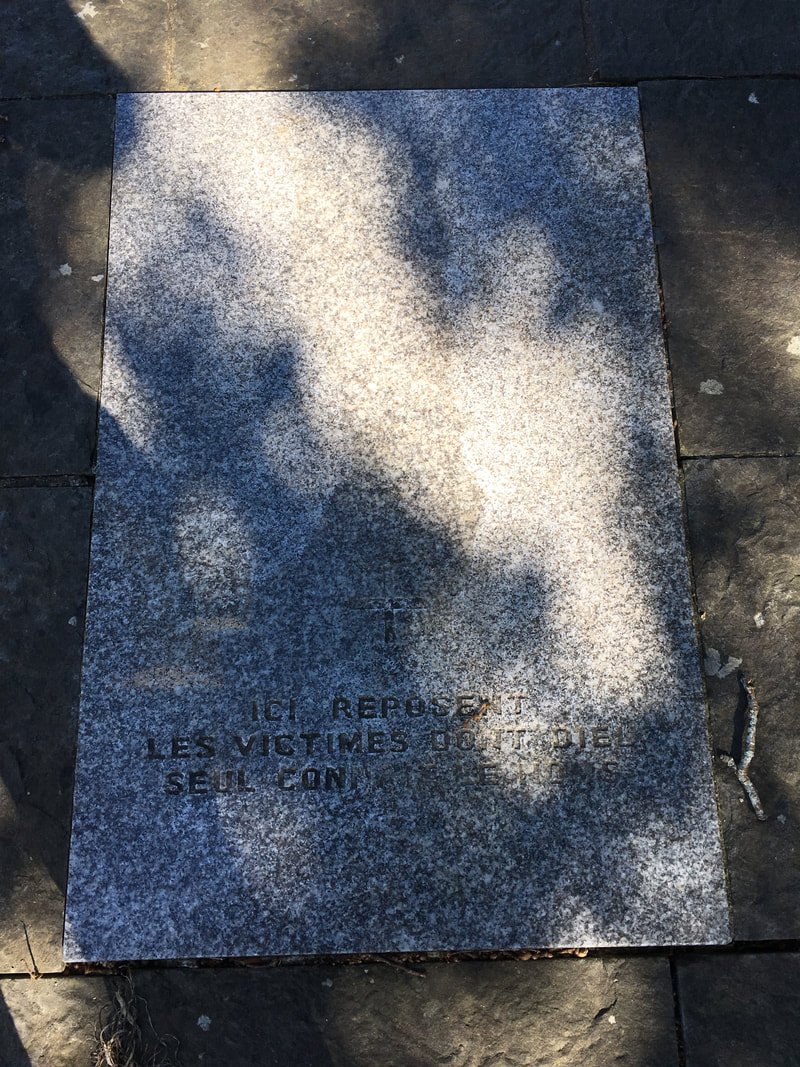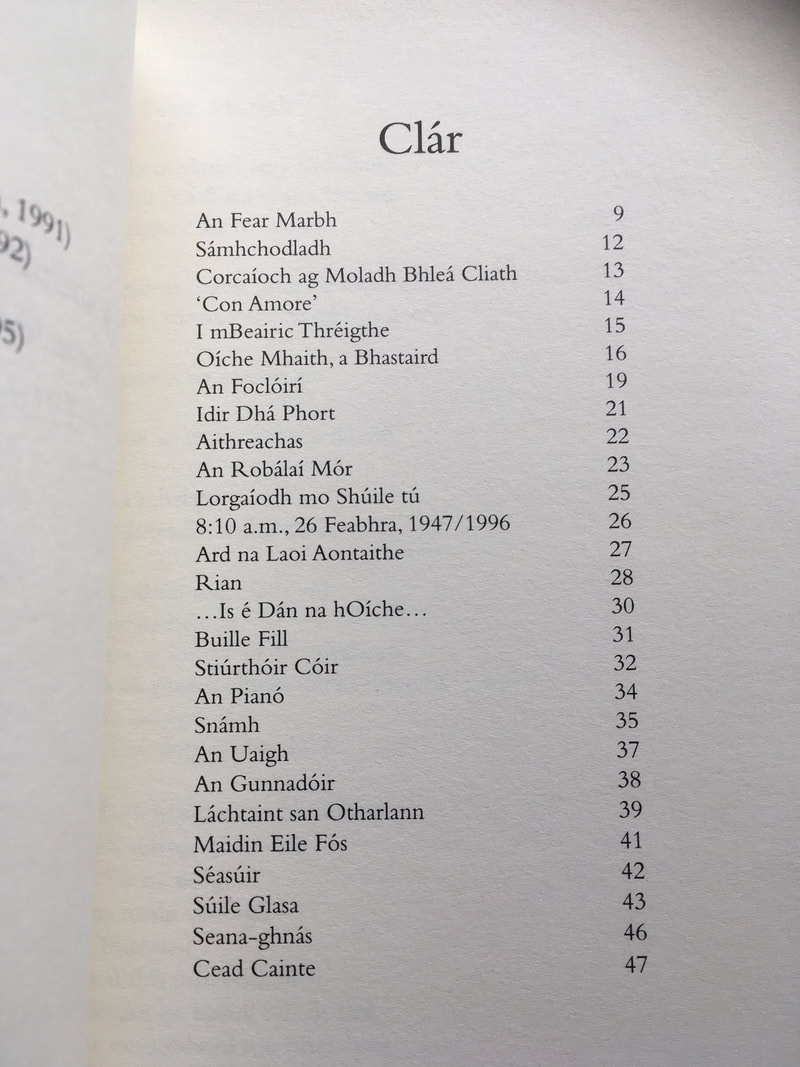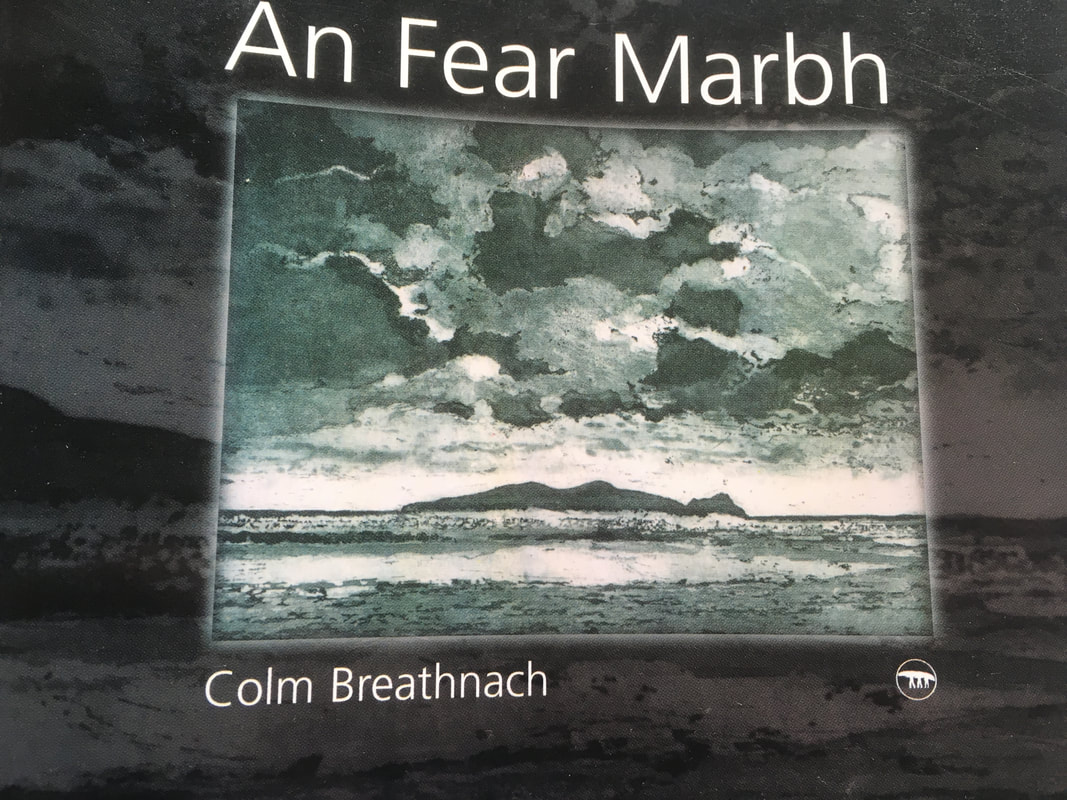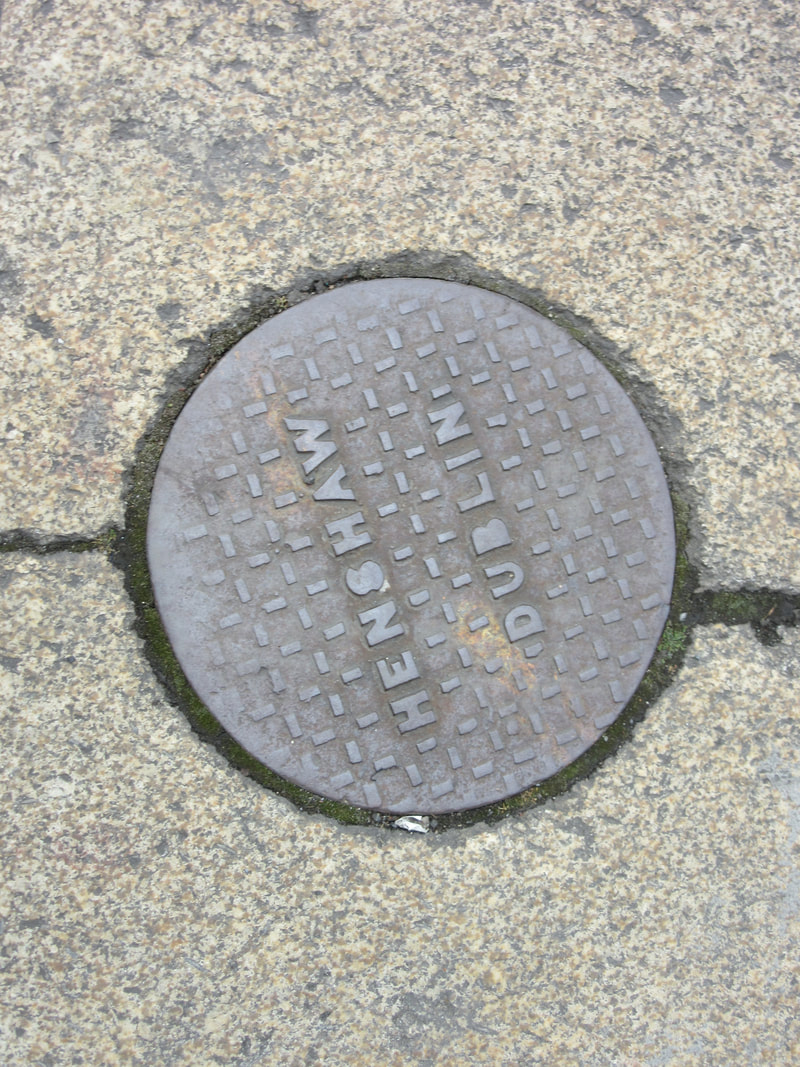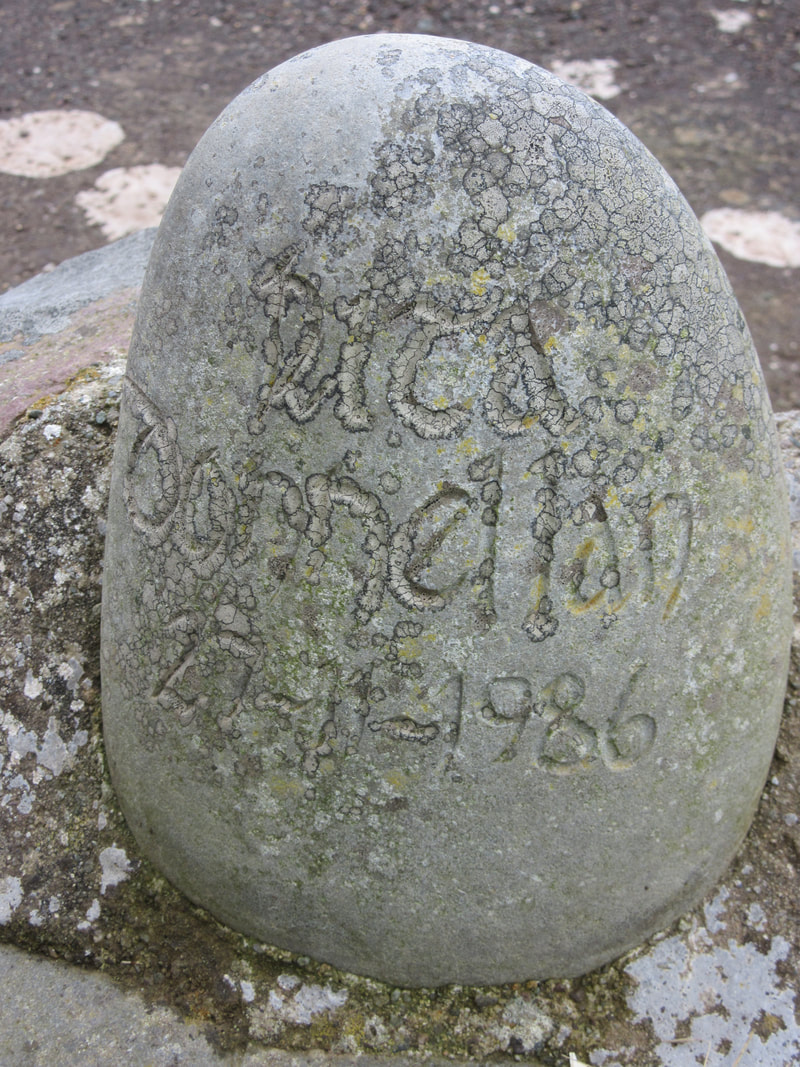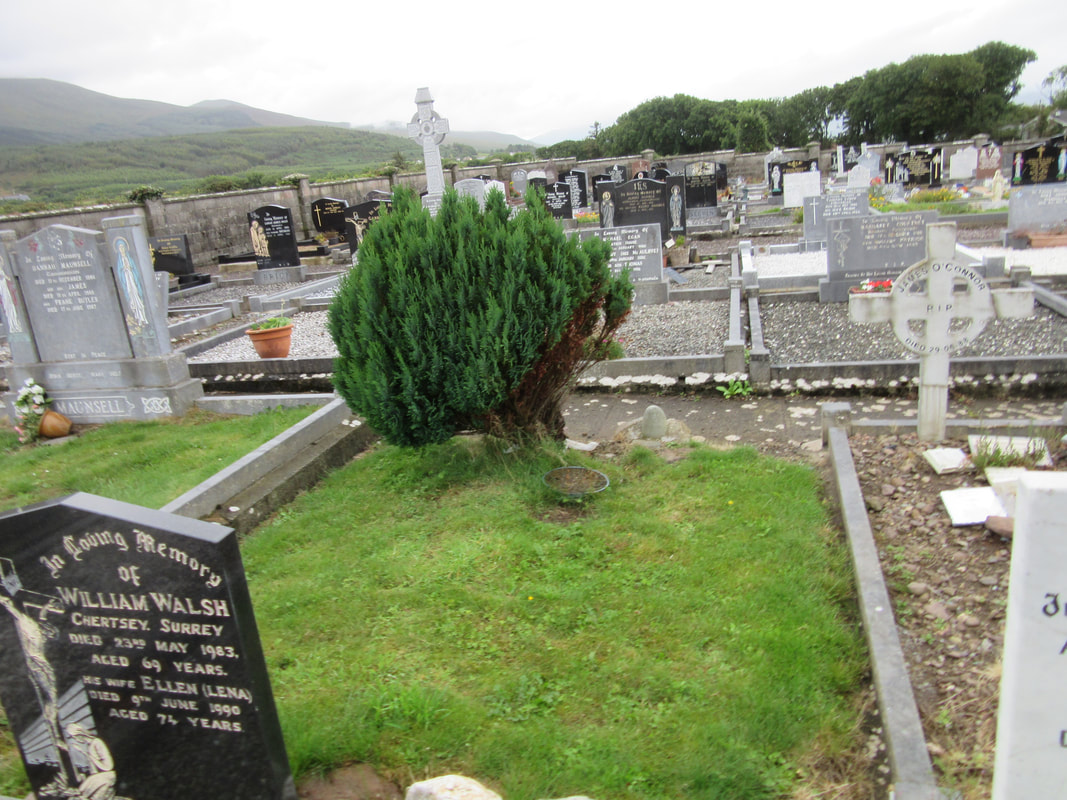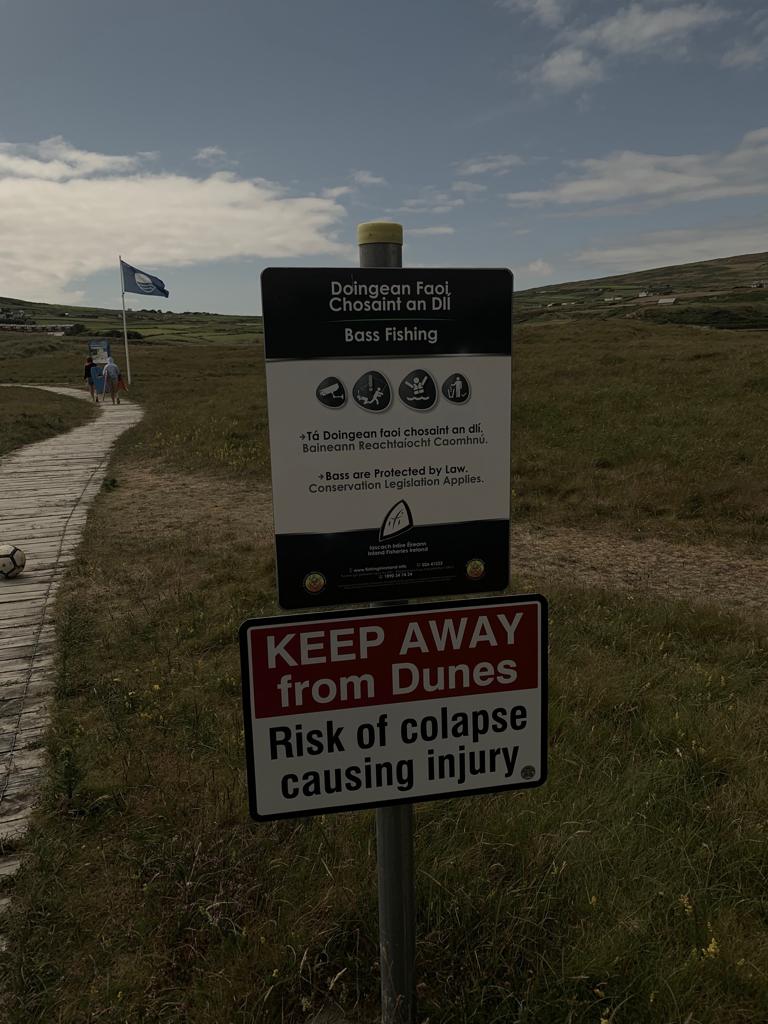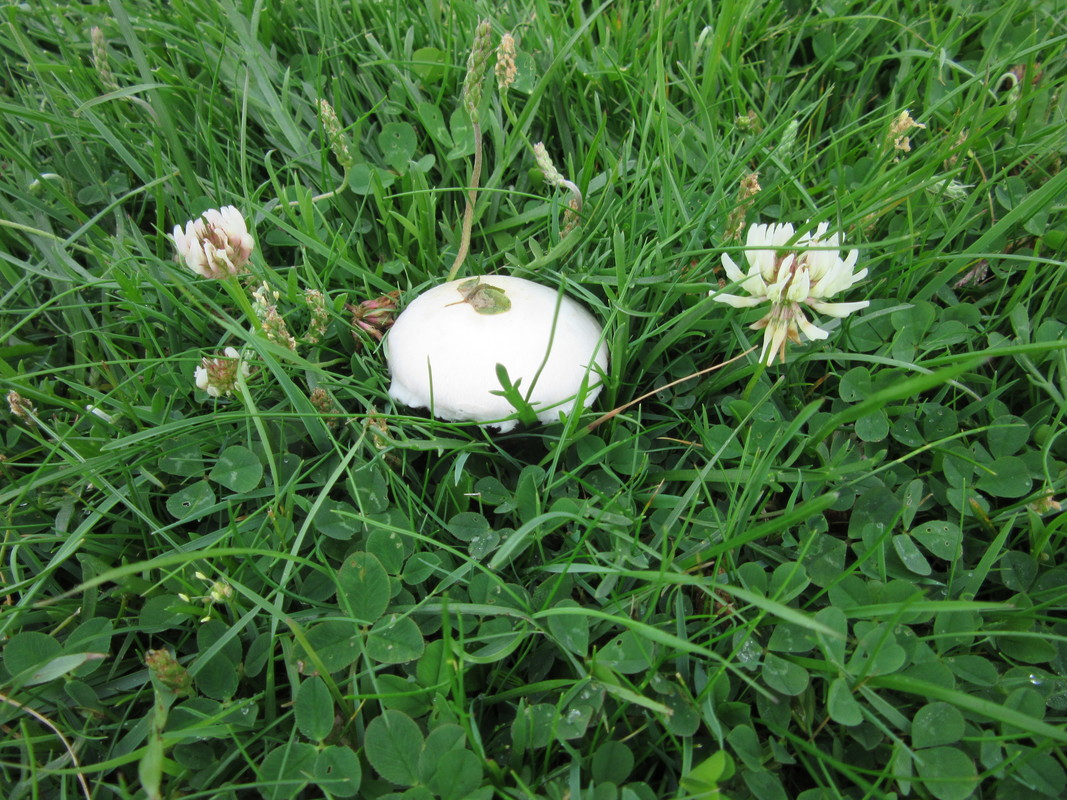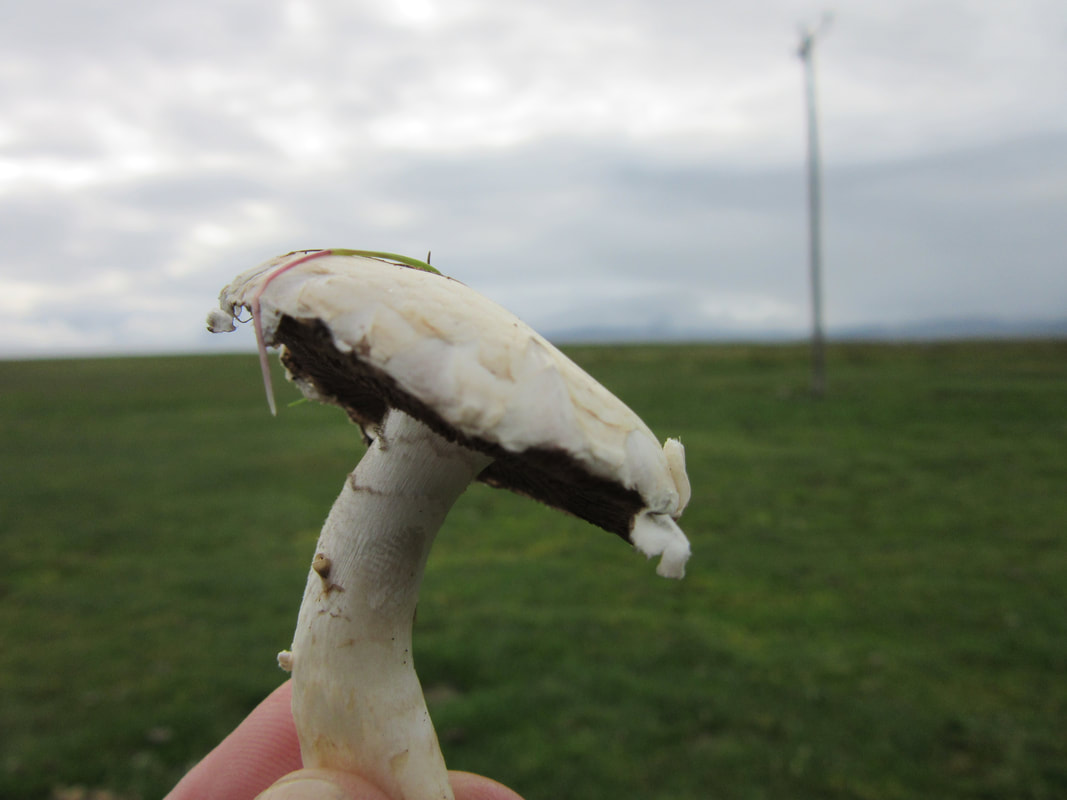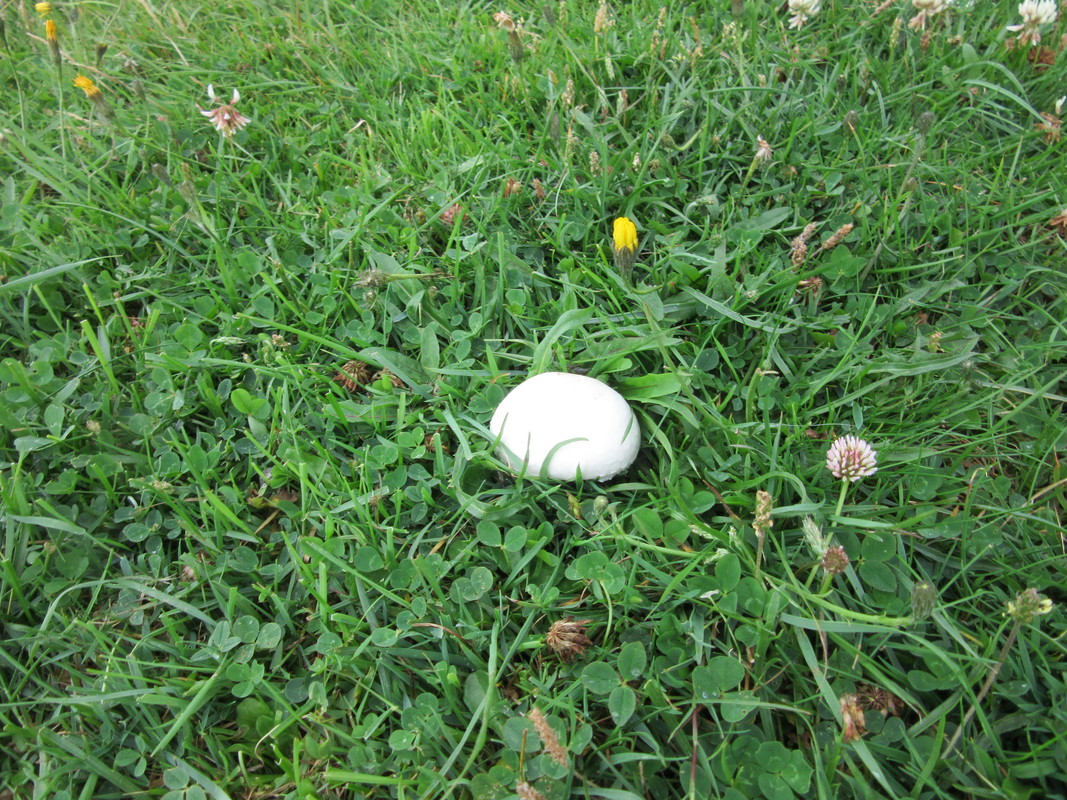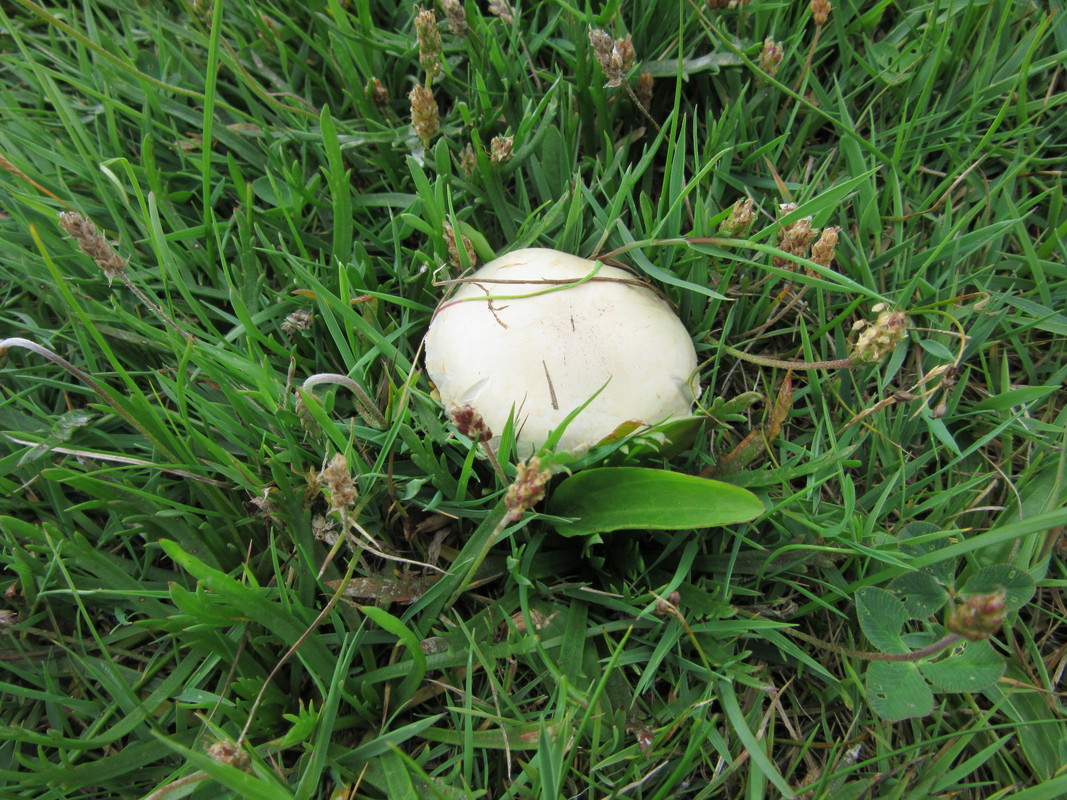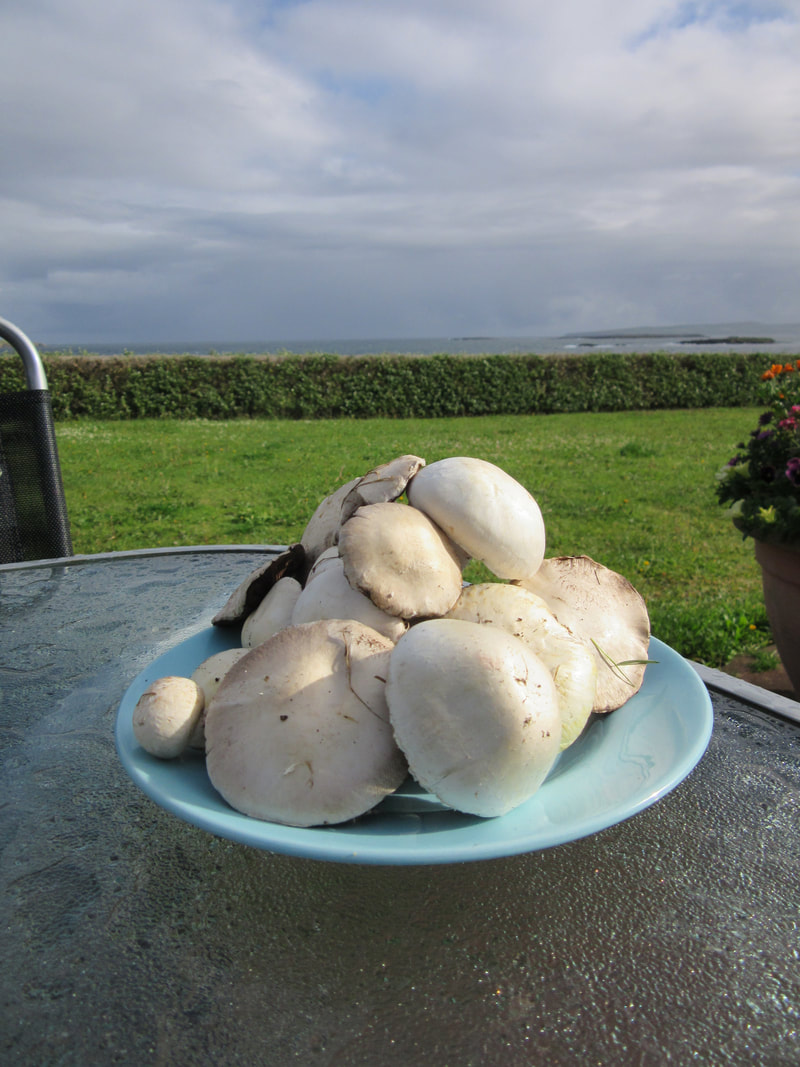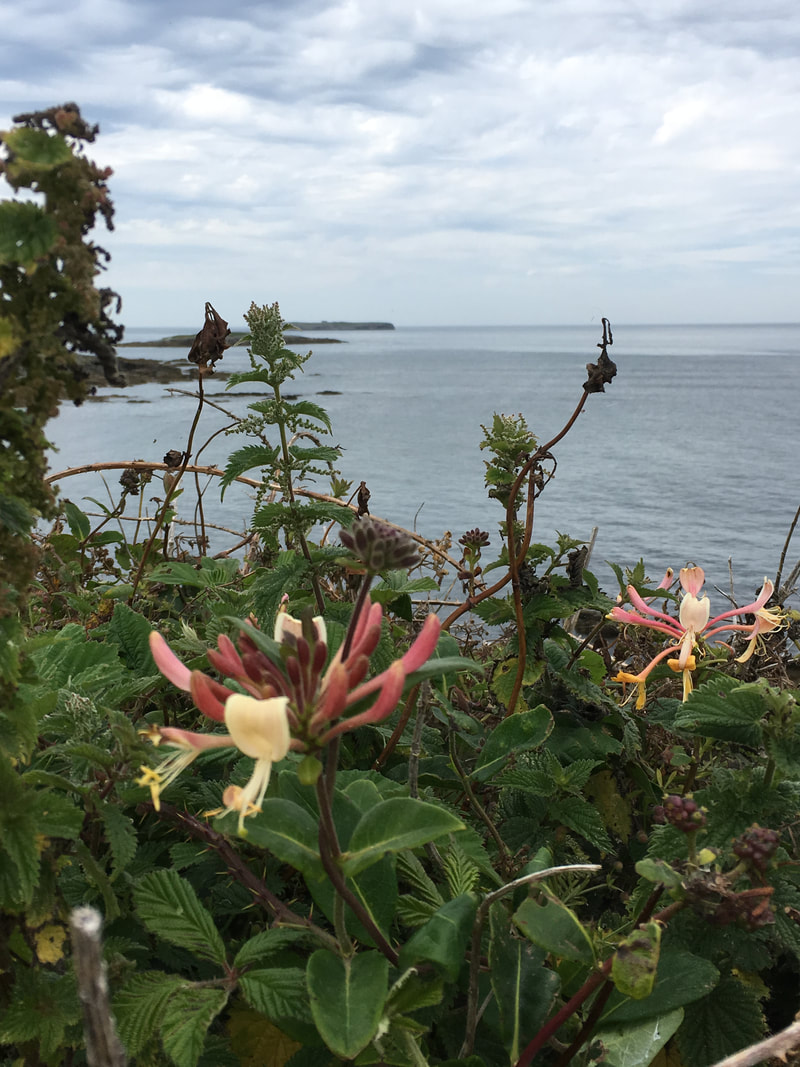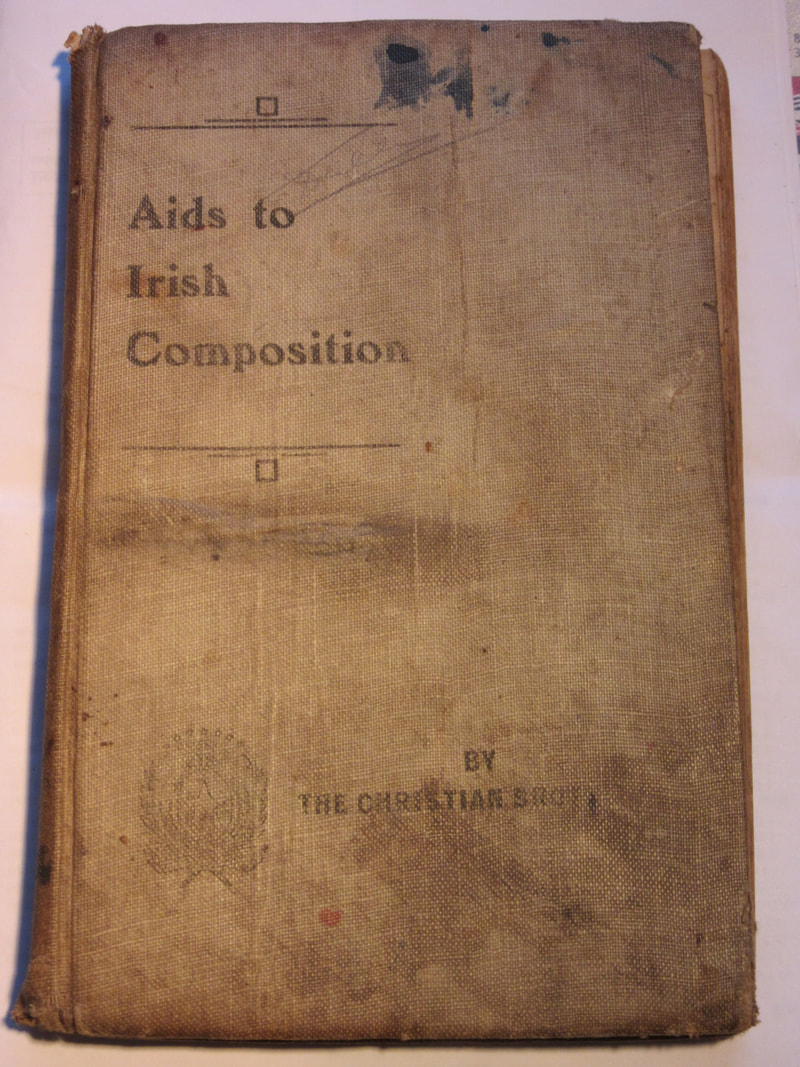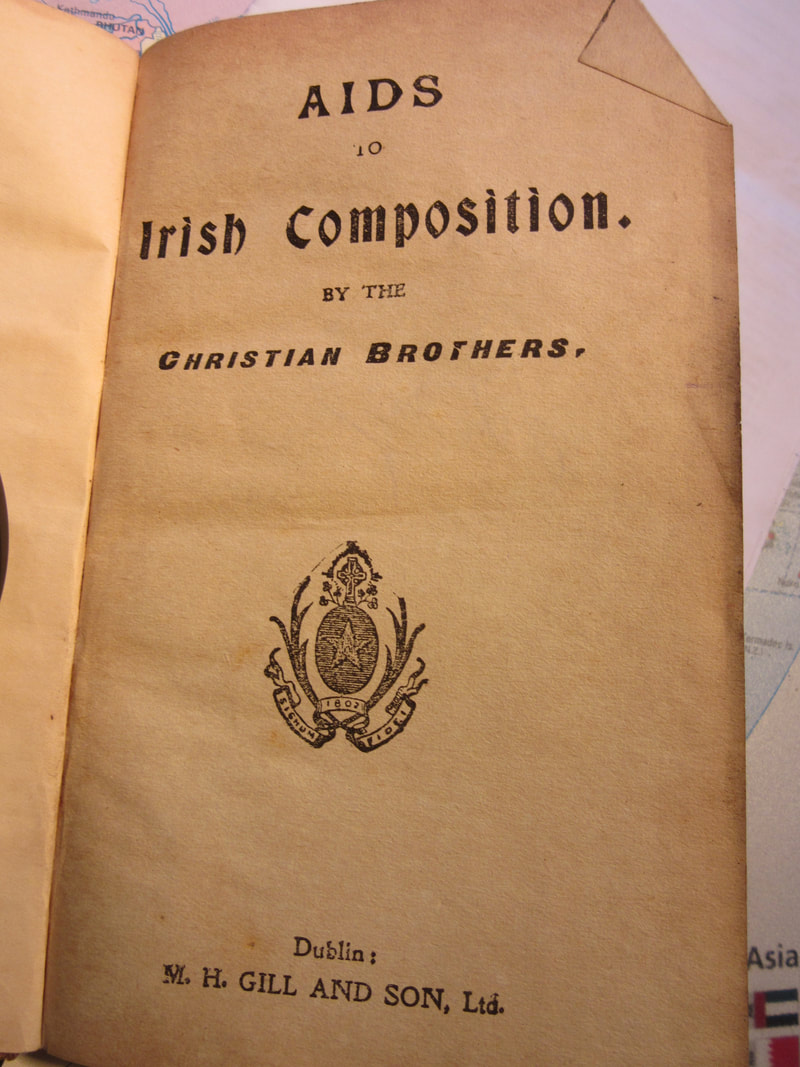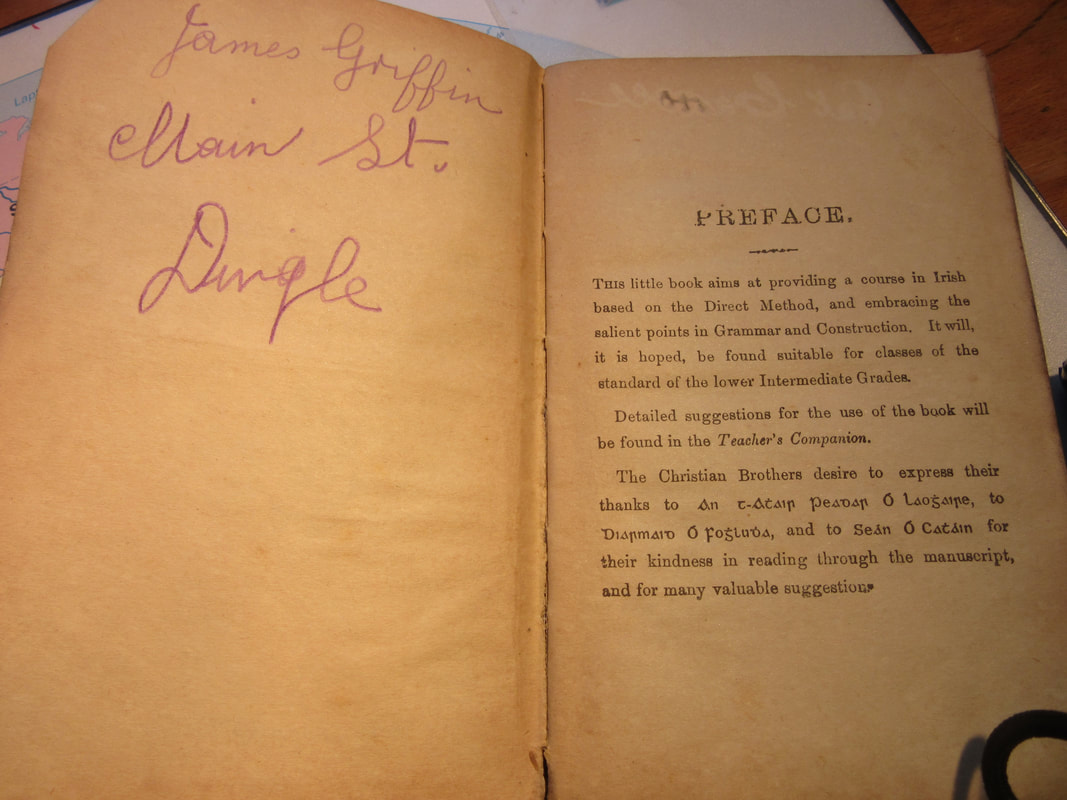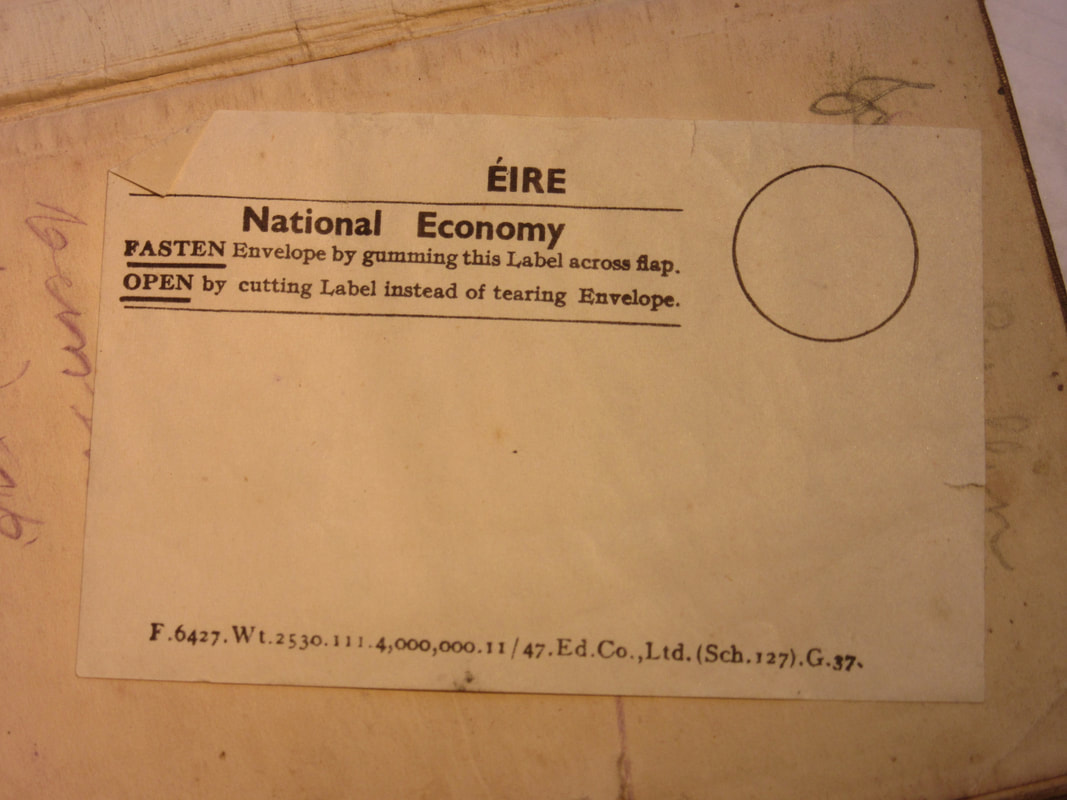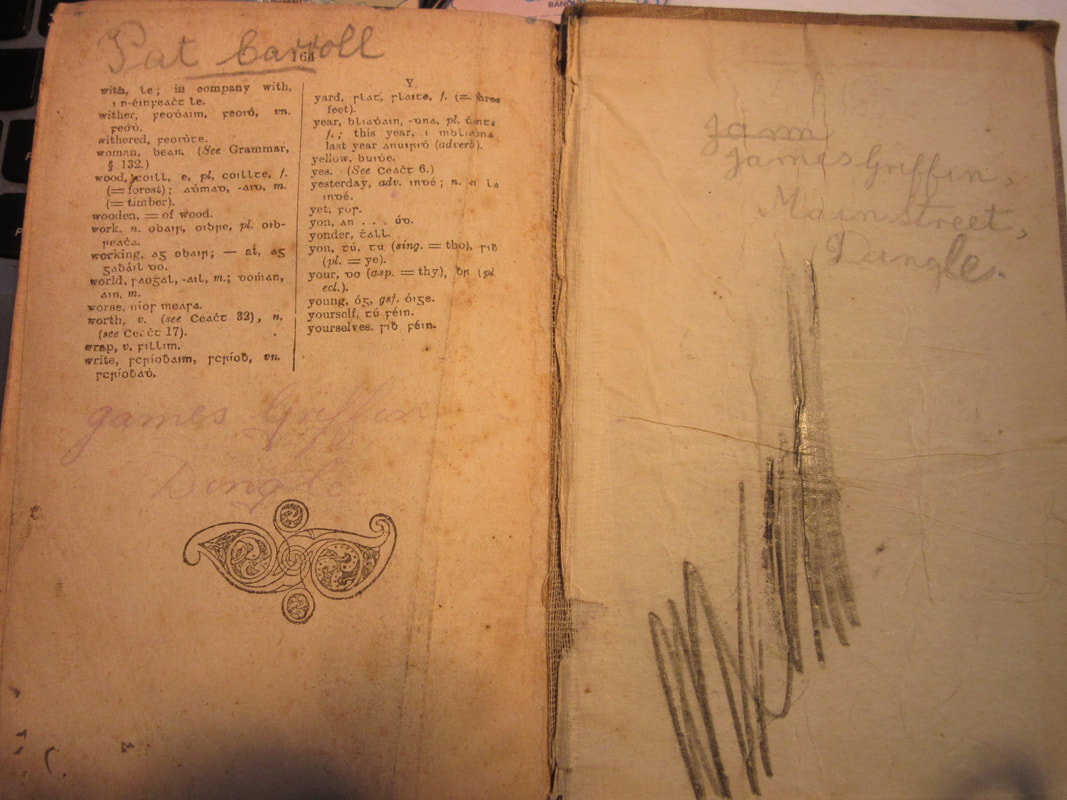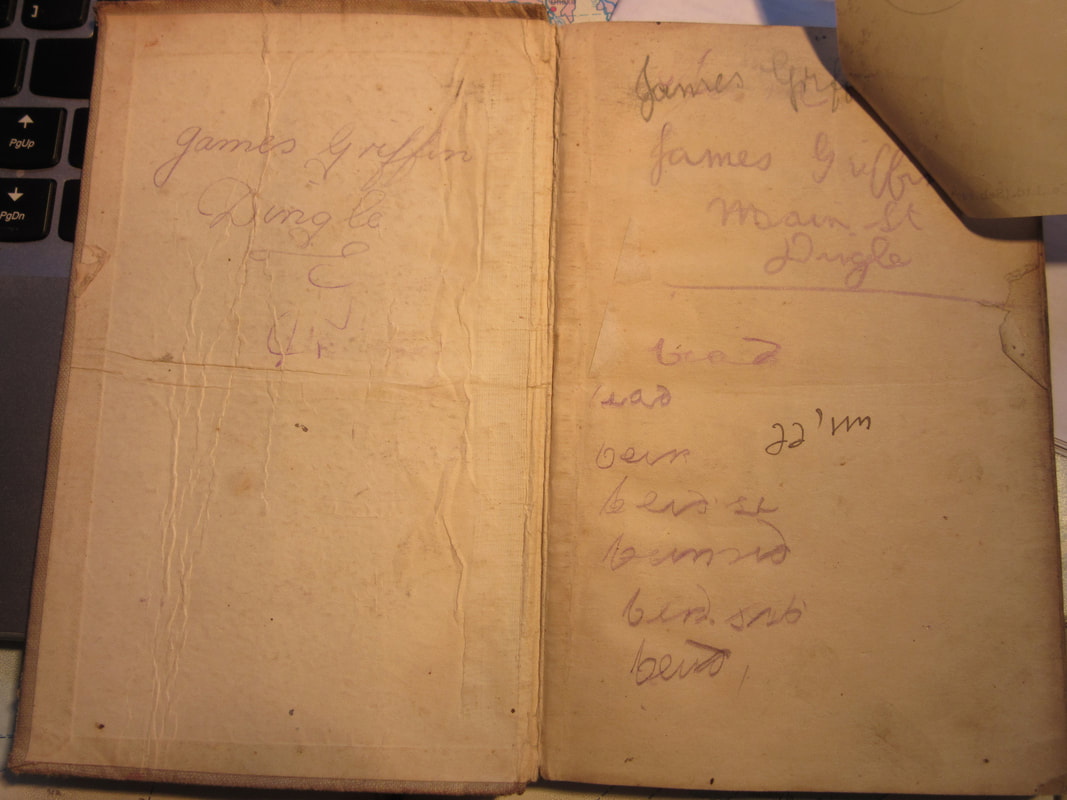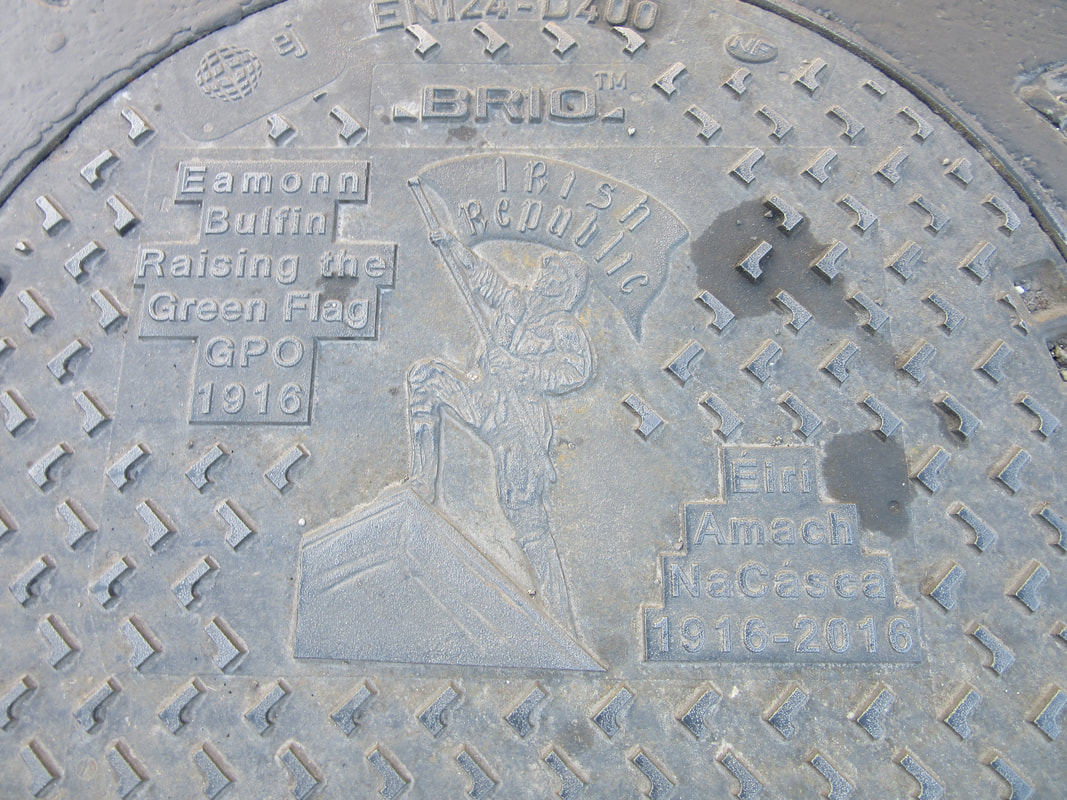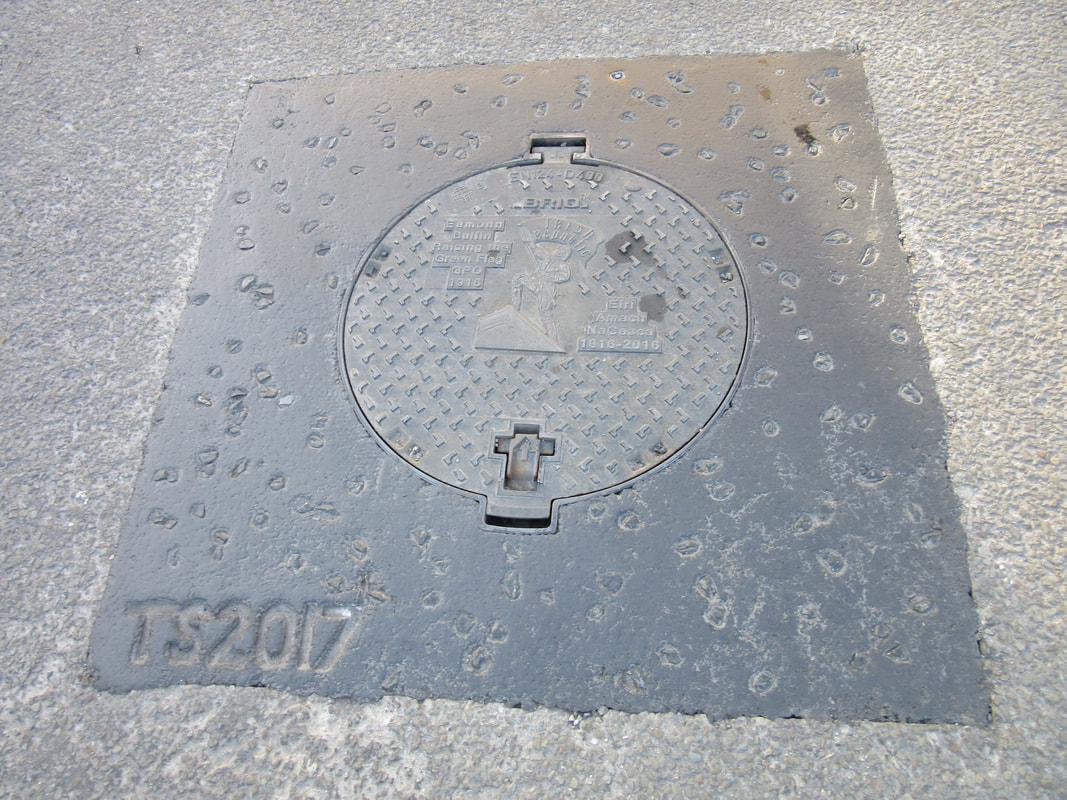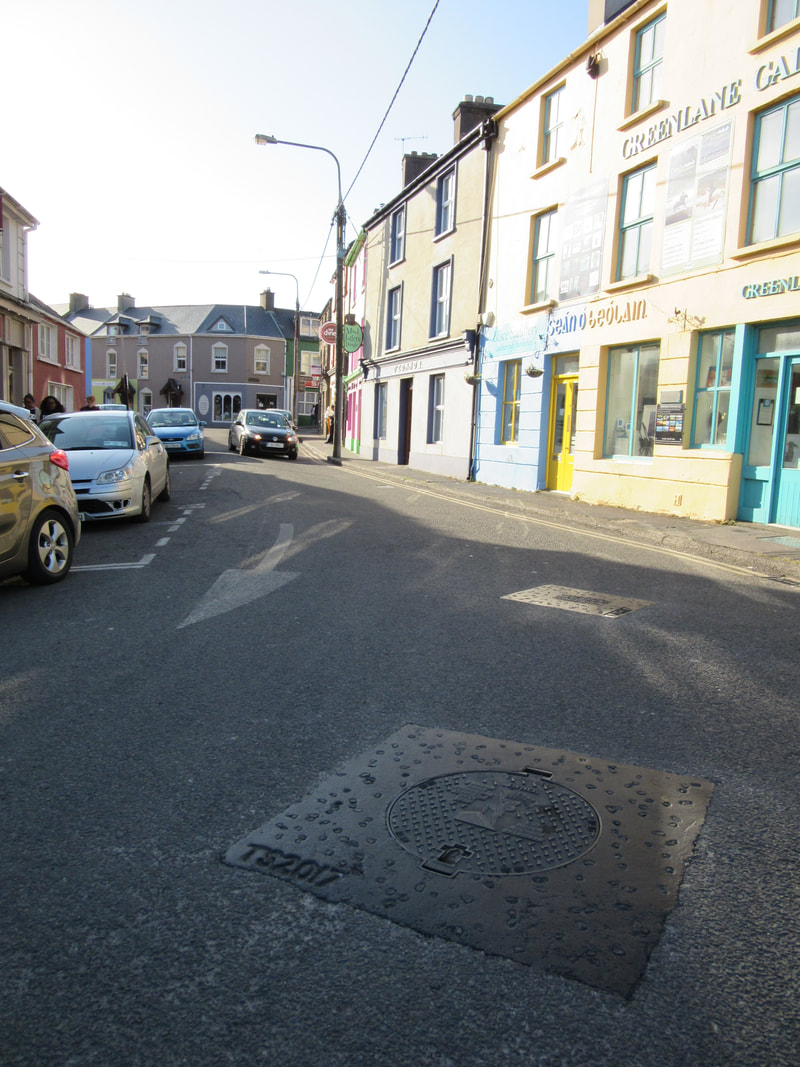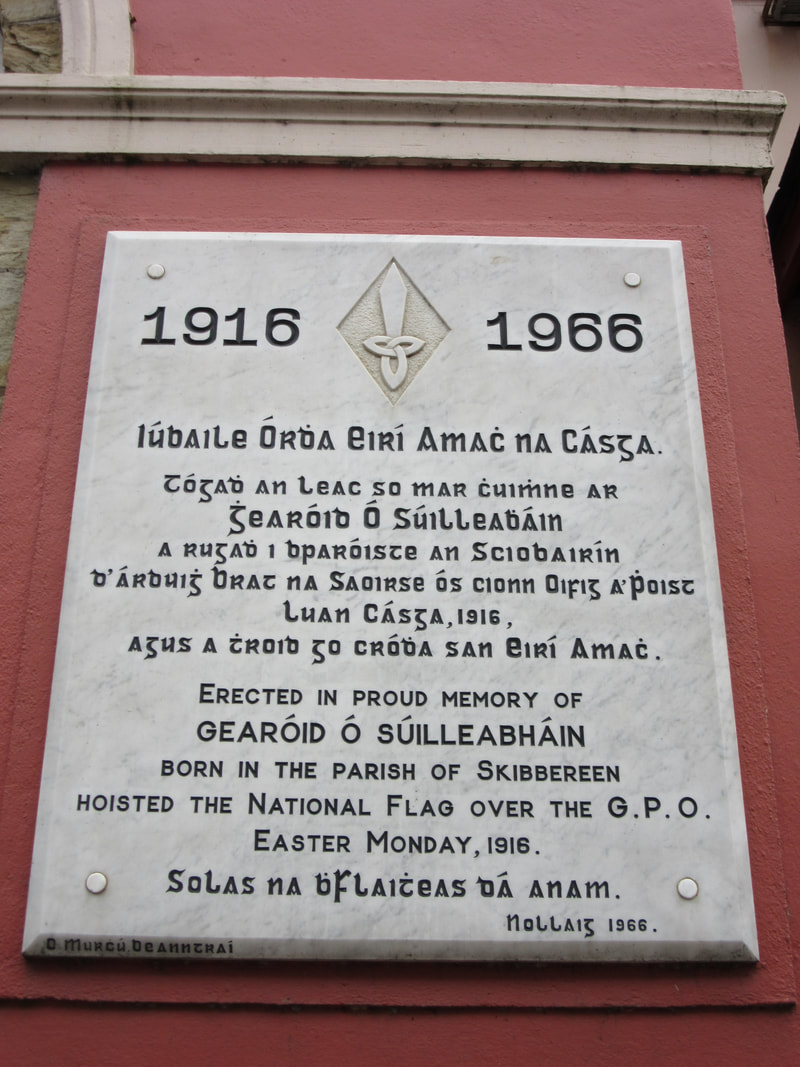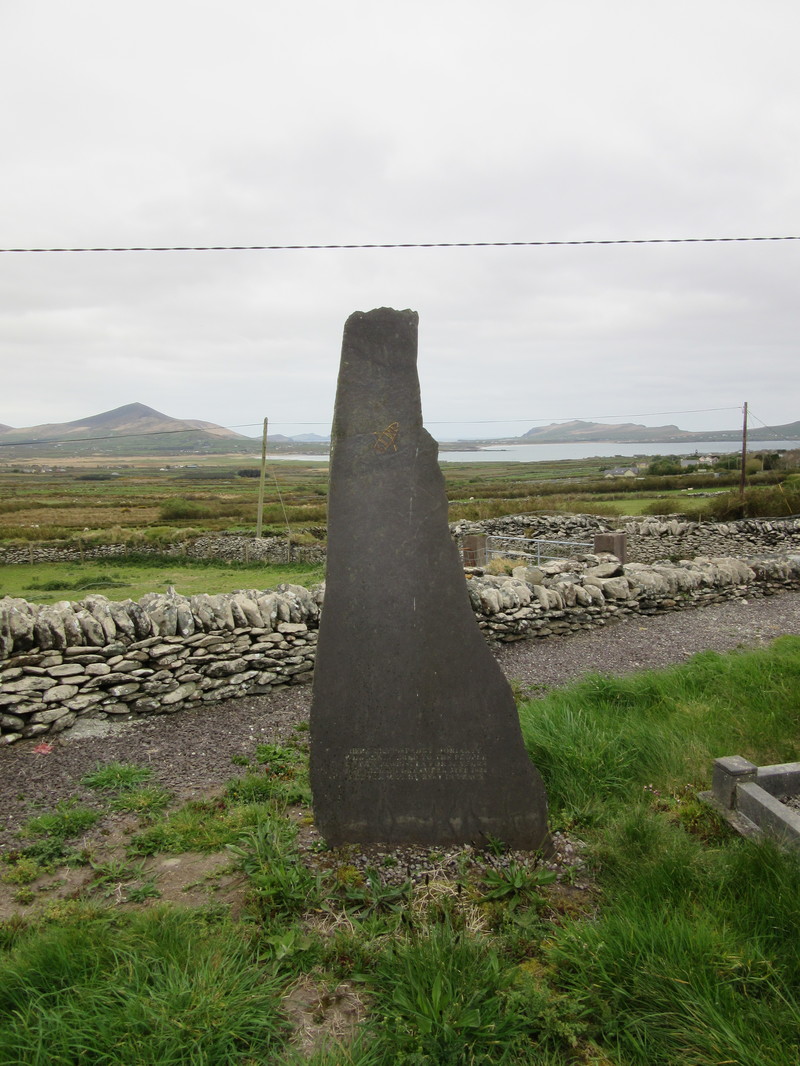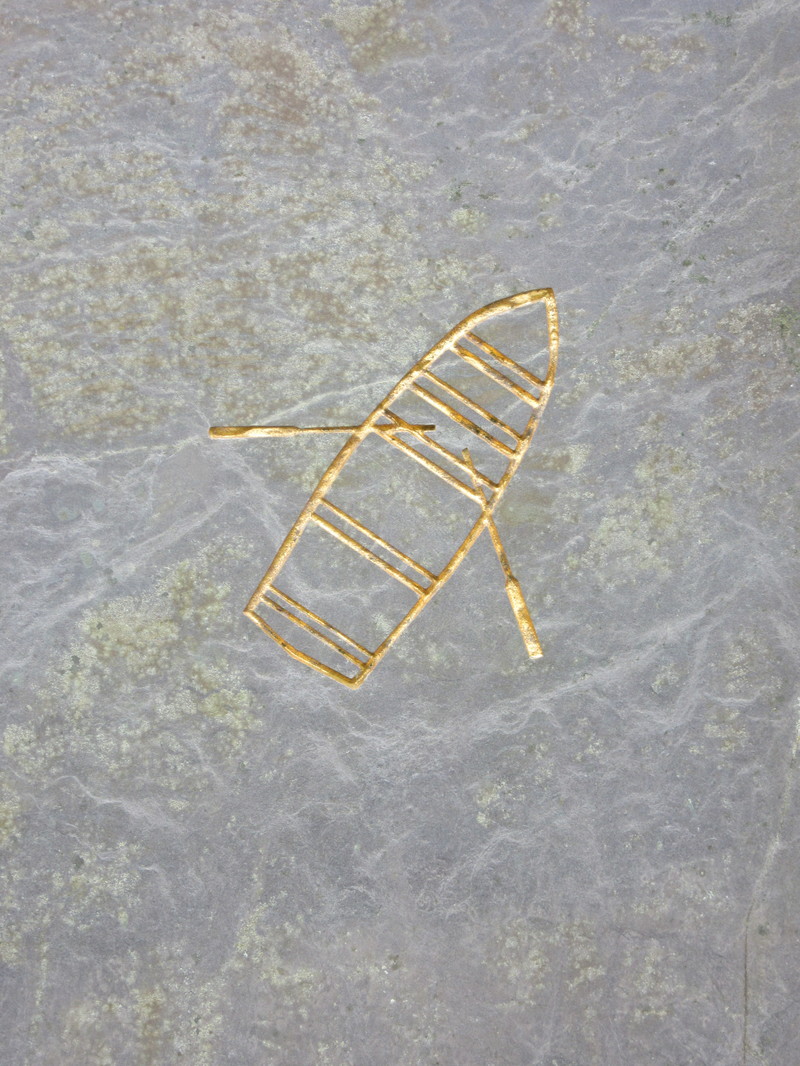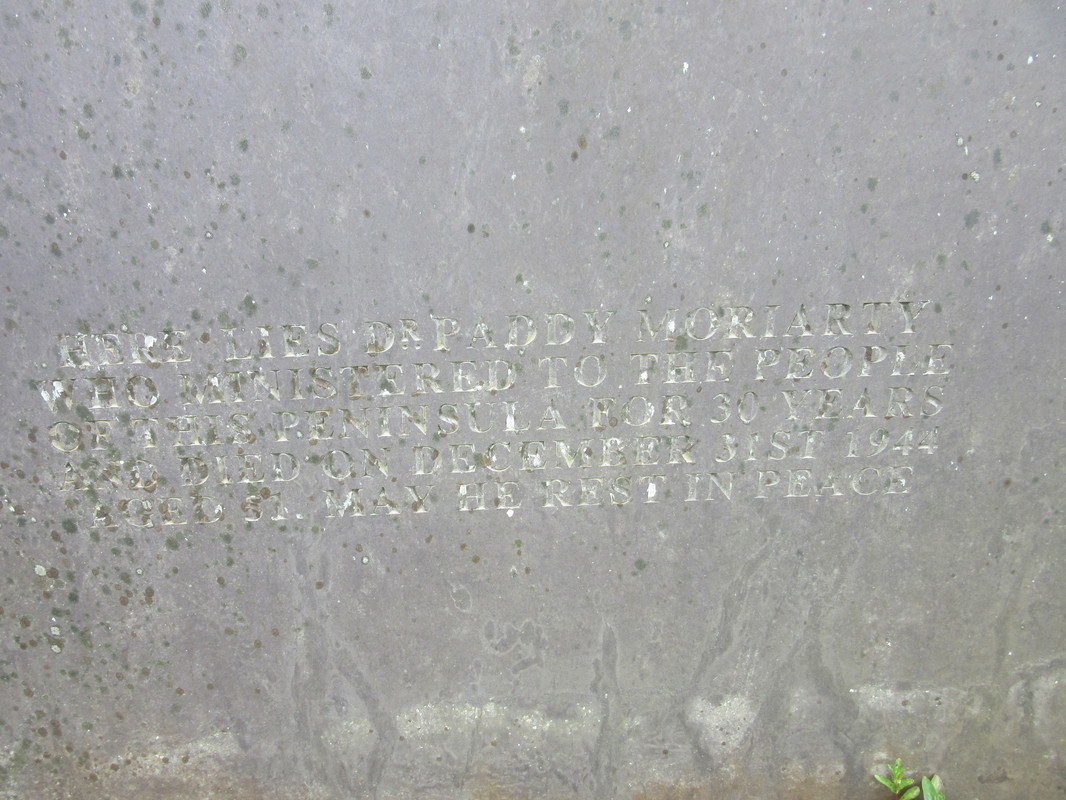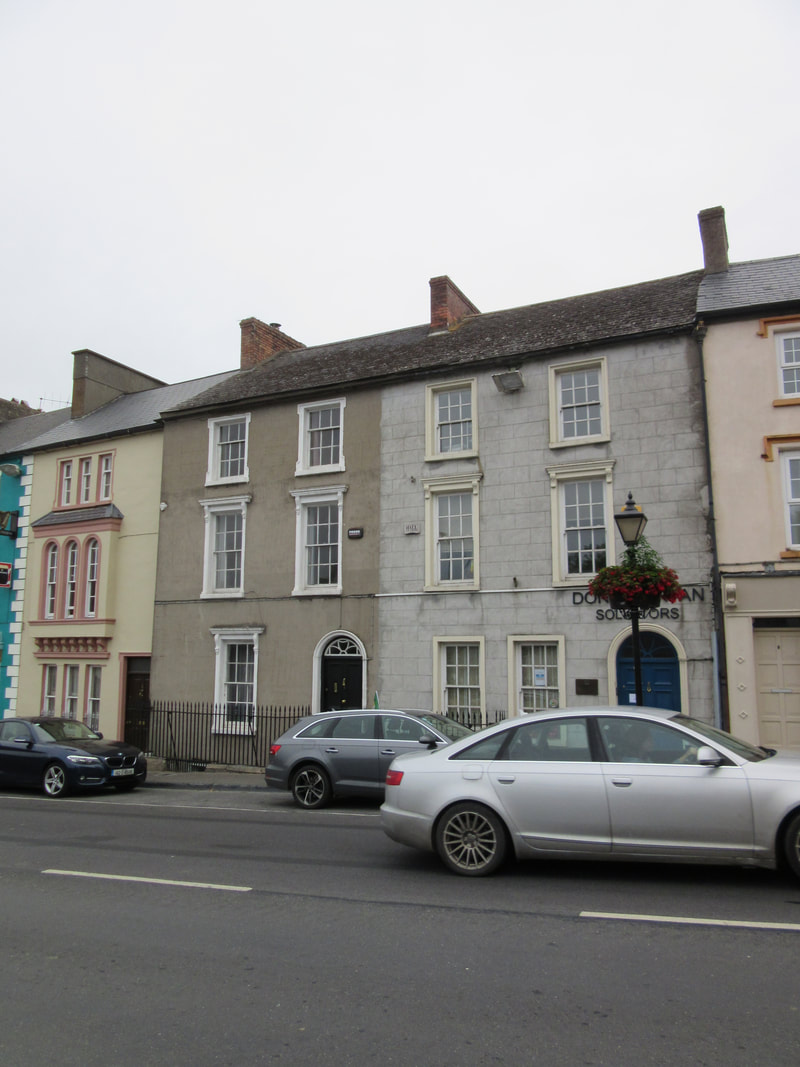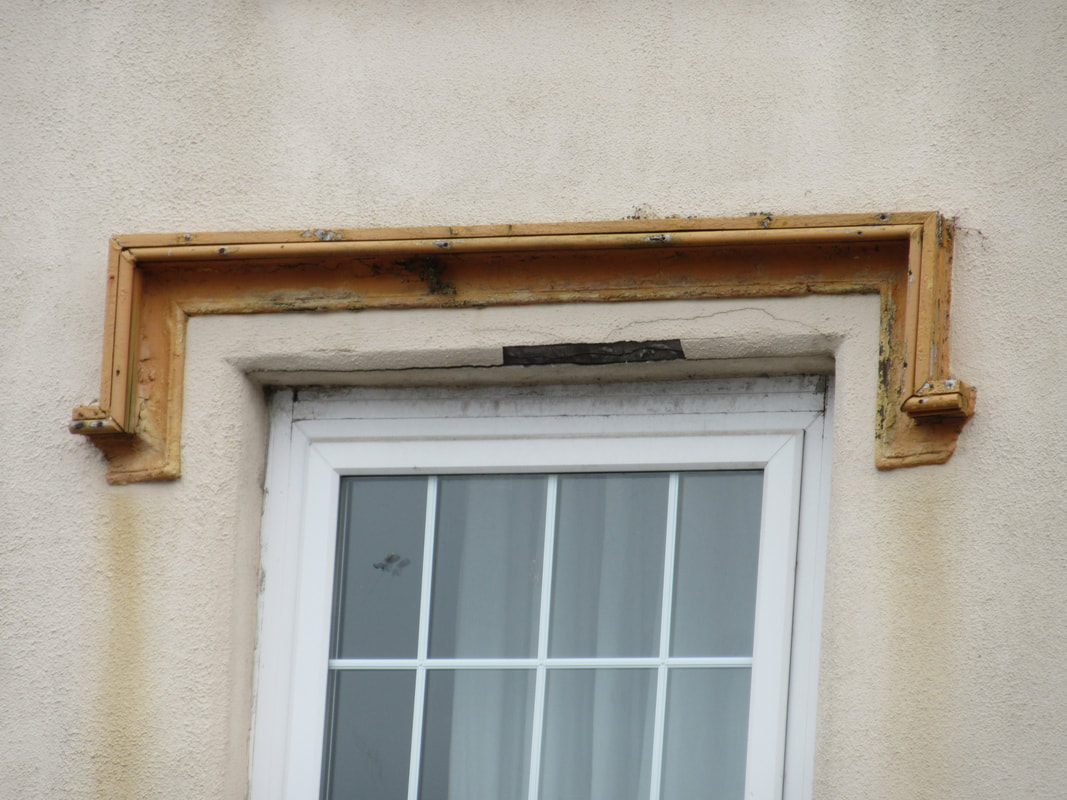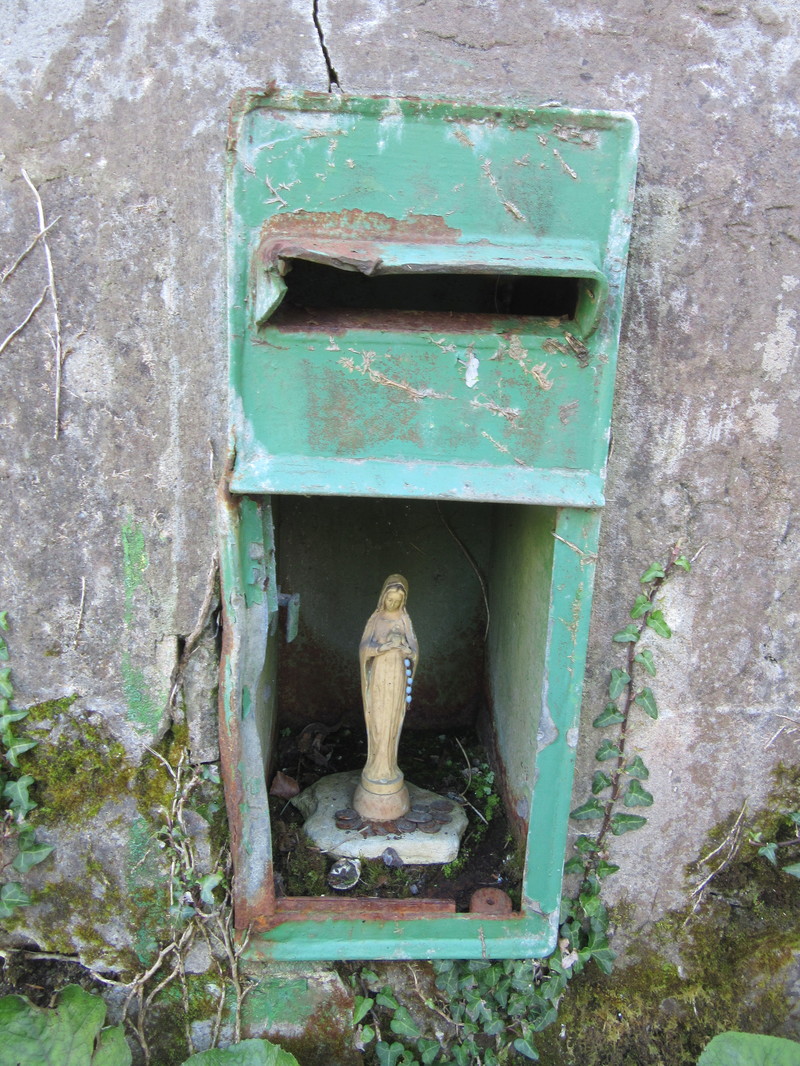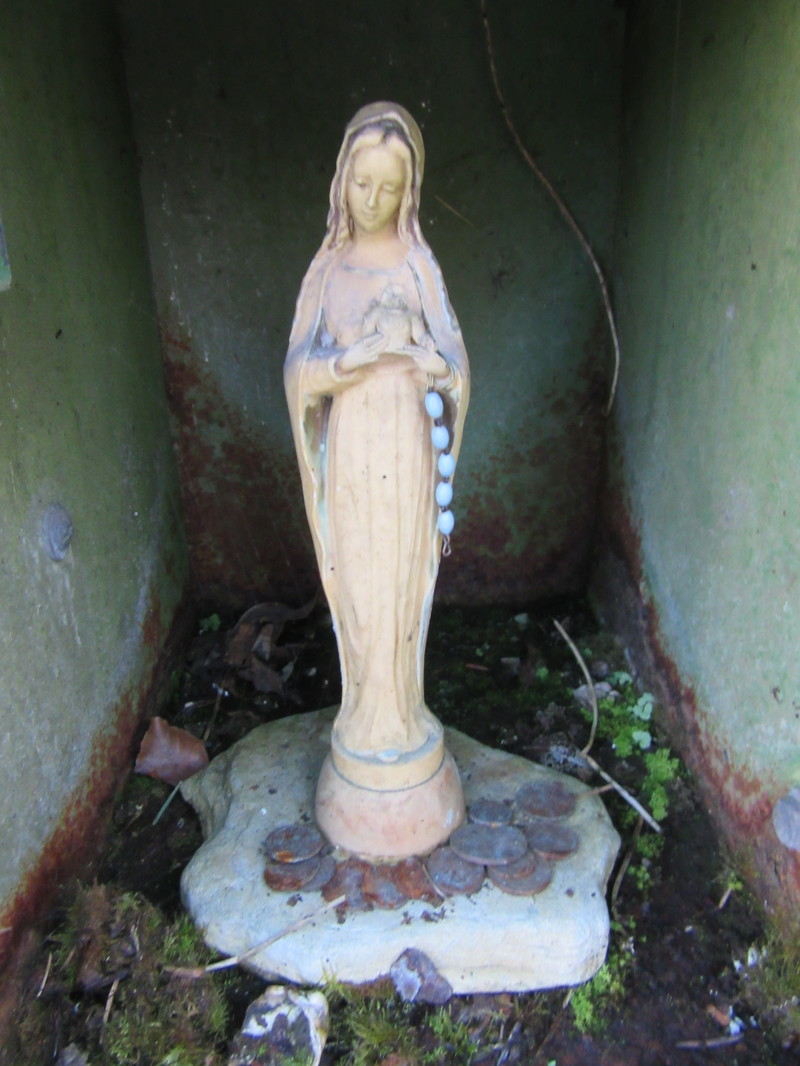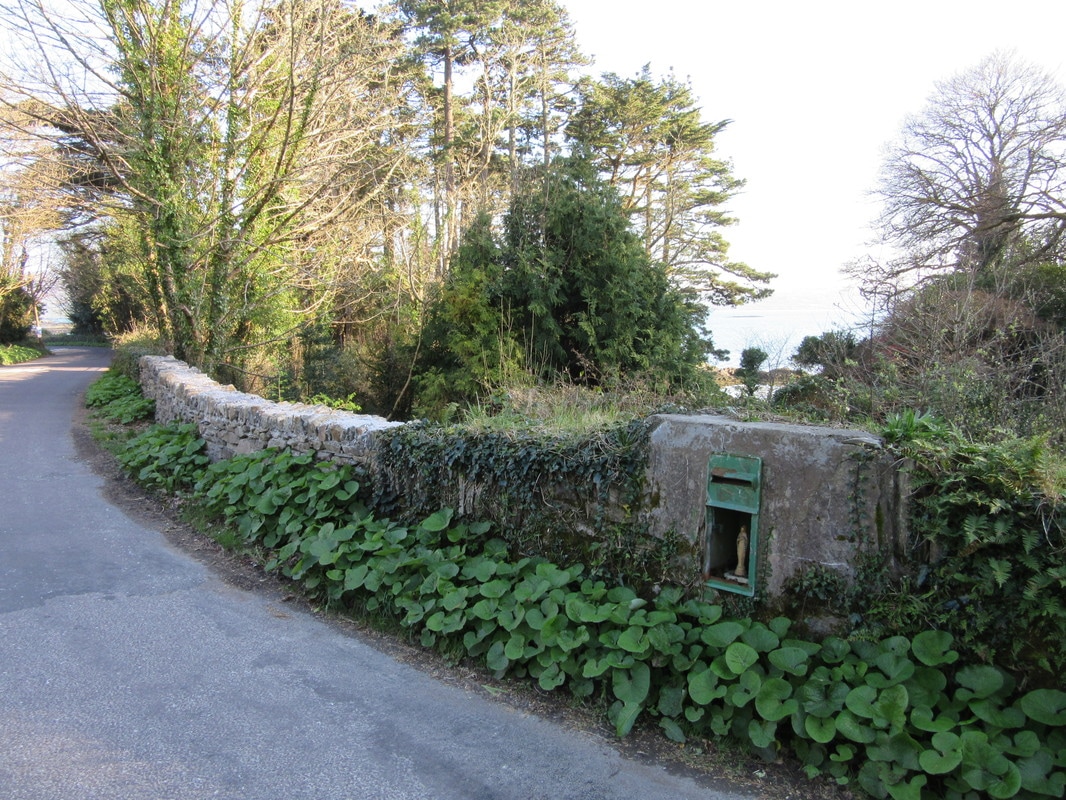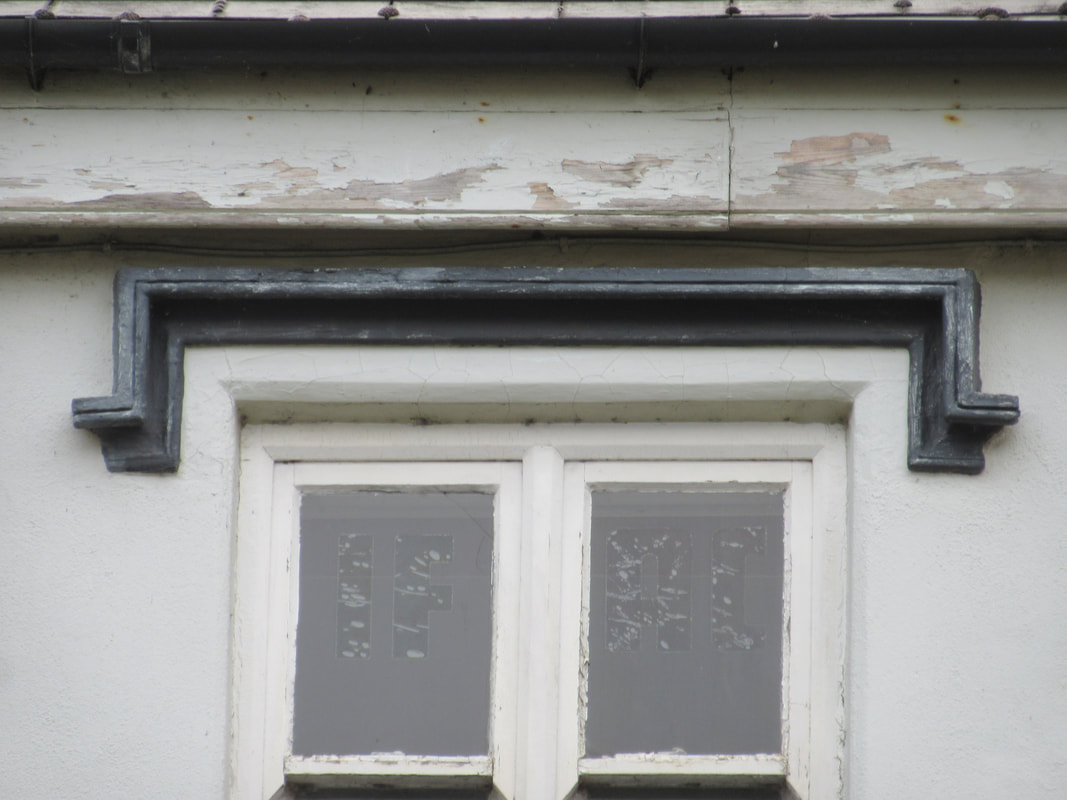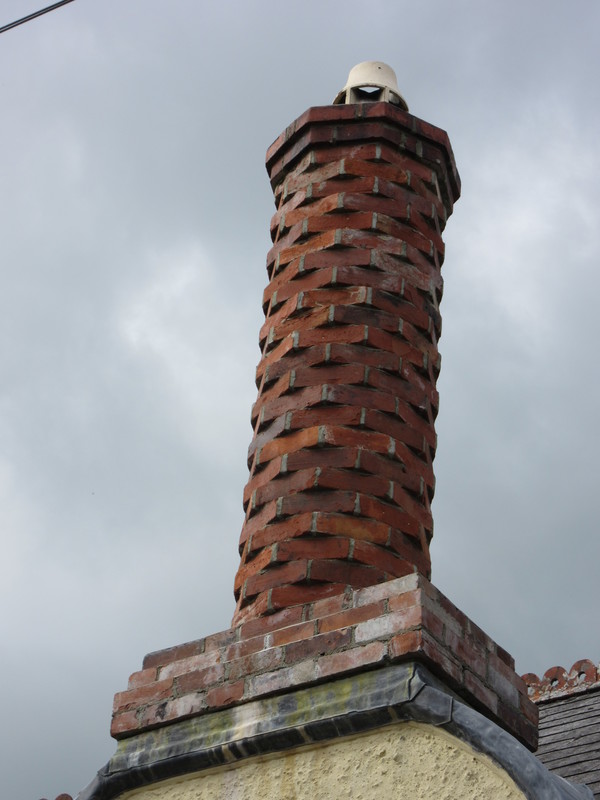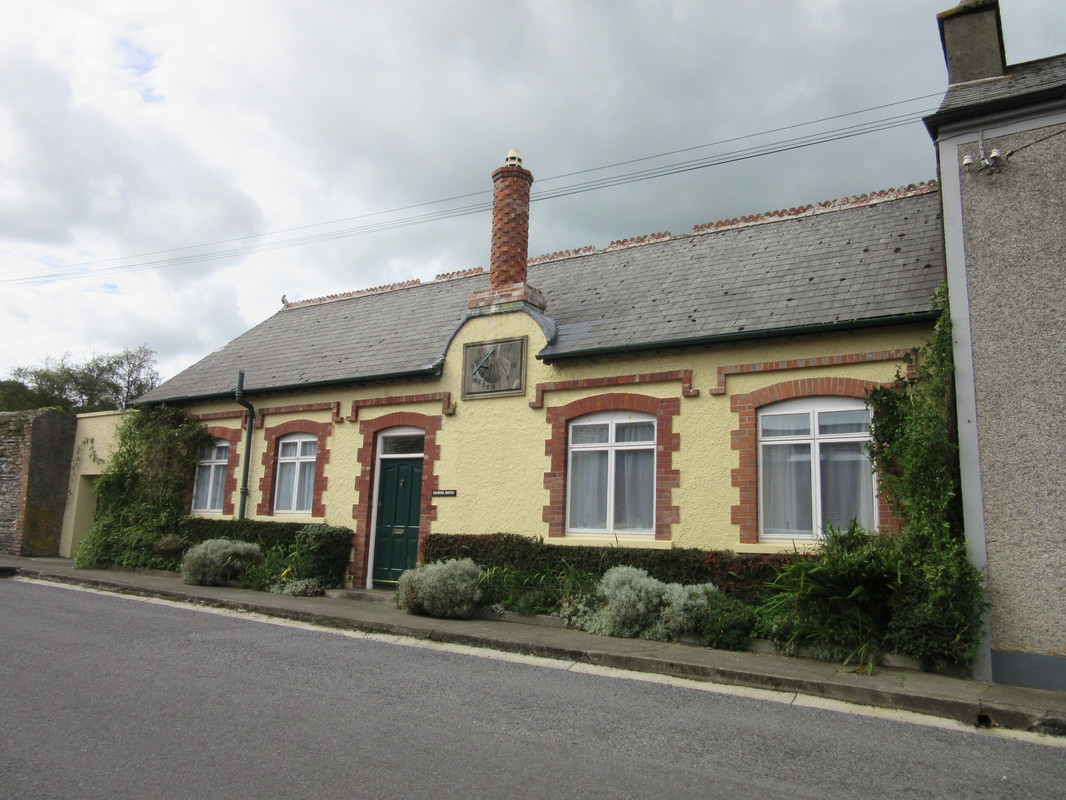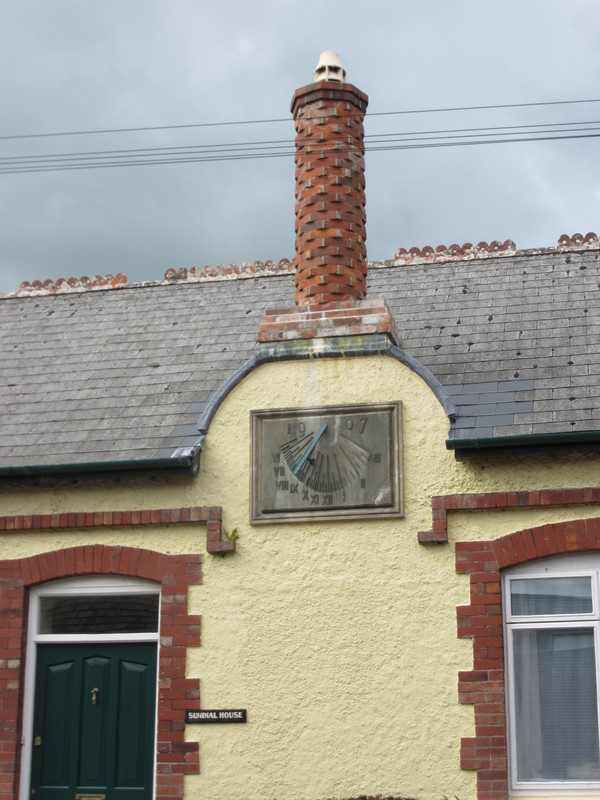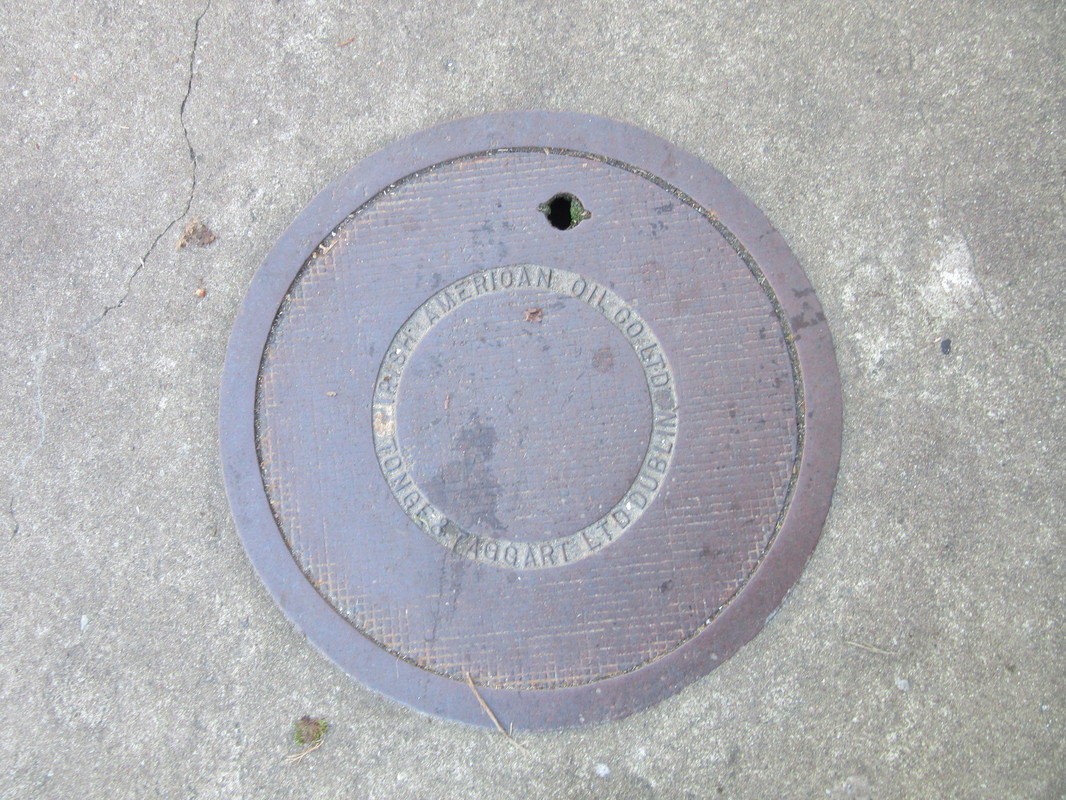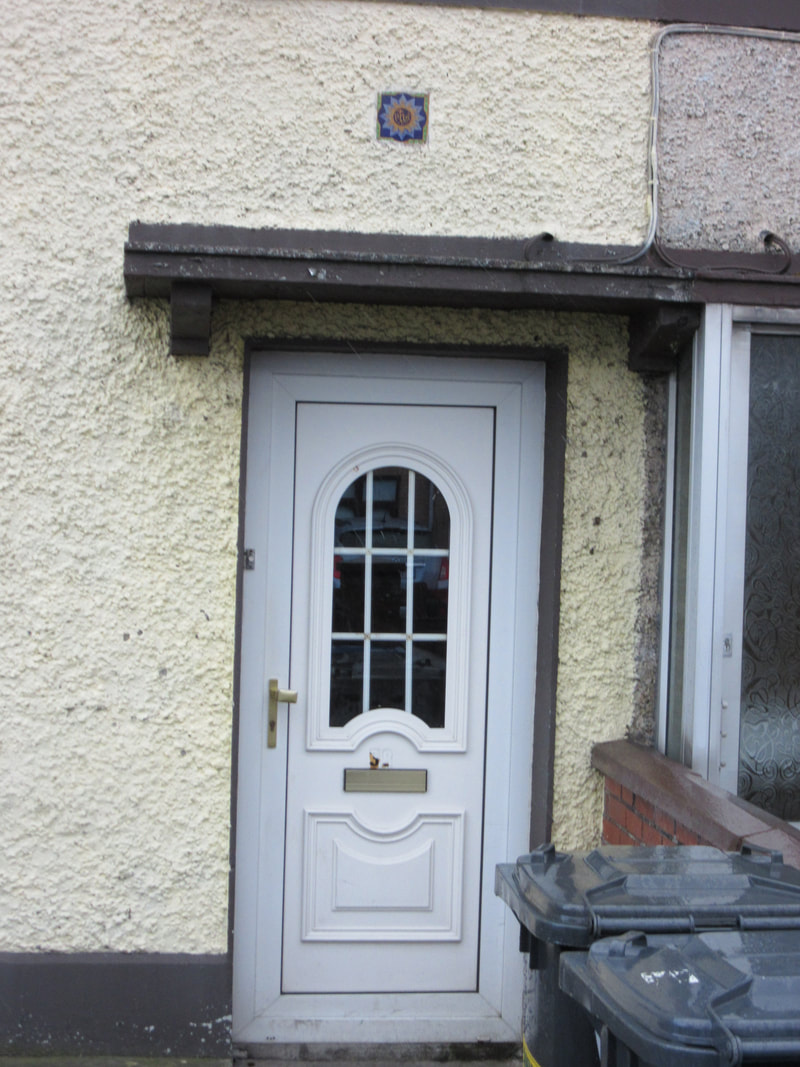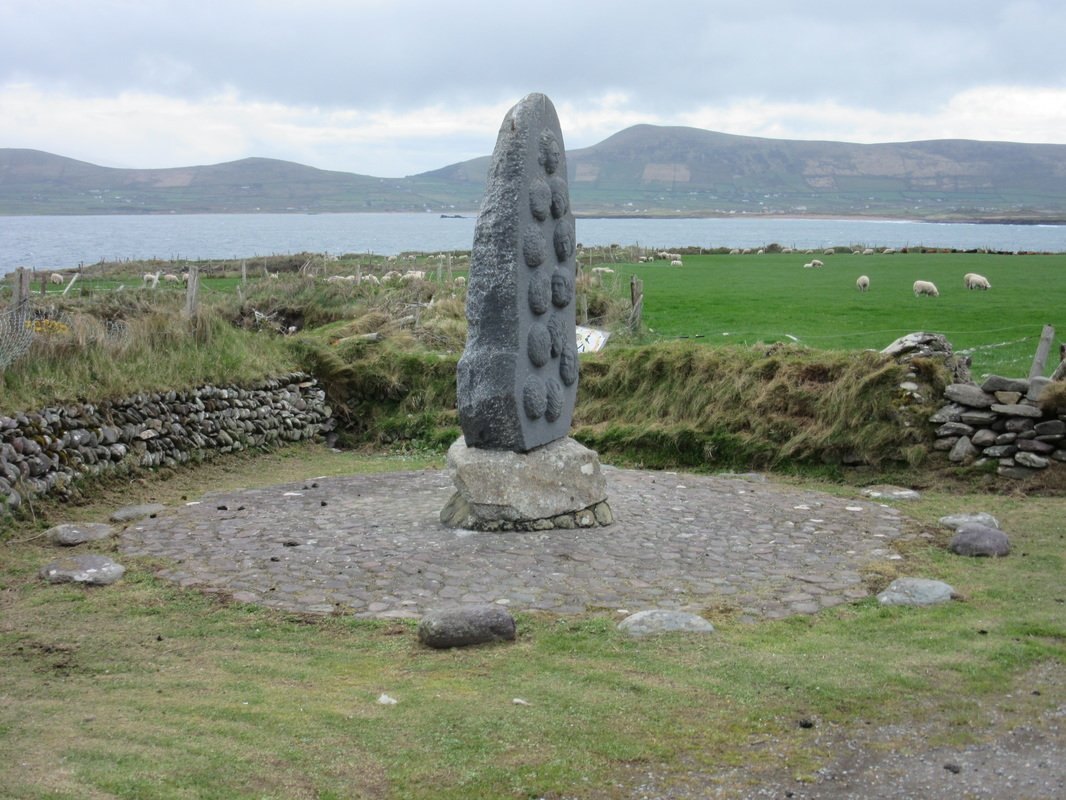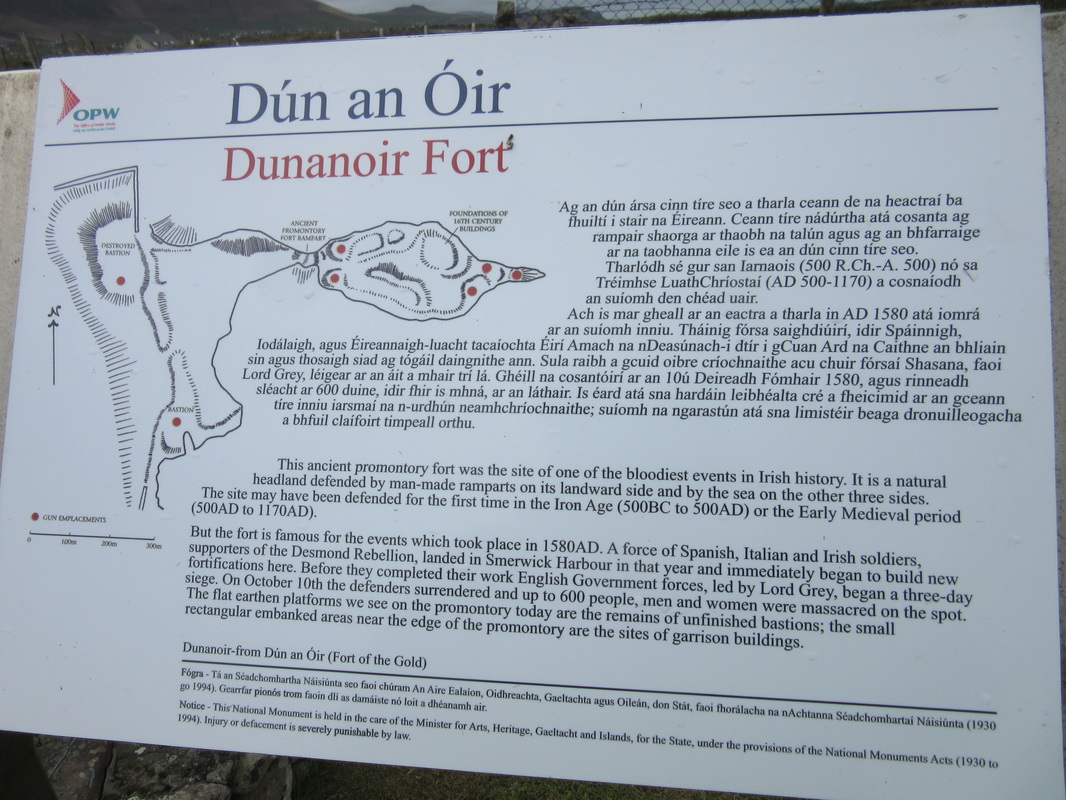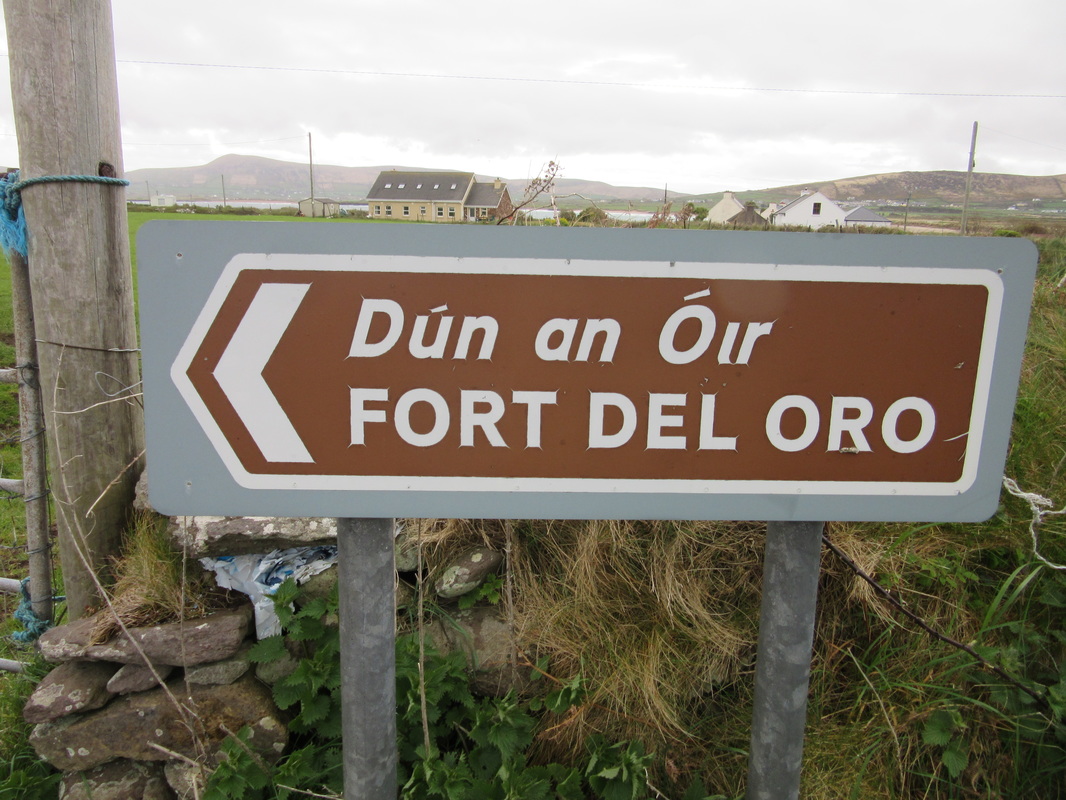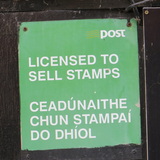This reminded me of the remnannts of an old and very small cottage that I spotted when travelling the roads around Ballymacelligott, a few years ago. I saw a fingerpost sign for the Captain Monteith 1916 Memorial and went searching.
|
Today, there were a number of tweets to remember that on this day in 1916, Roger Casement landed at Banna Strand in Co. Kerry having travelled on The Aud with arms for the planned rebellion of Easter 1916. He was arrested shortly after landing and became the last of the ’16 Men Dead’ when executed in Pentonville Prison in August. This reminded me of the remnannts of an old and very small cottage that I spotted when travelling the roads around Ballymacelligott, a few years ago. I saw a fingerpost sign for the Captain Monteith 1916 Memorial and went searching.
0 Comments
Last Summer, on a trip to The Maharees of the Dingle peninsula, I spotted a plaque the likes of which I had not seen before – a plaque listing and remembering those of the locality who left for farms elsewhere as part of the Irish Land Commission.
It might answer the question as to why the Shally family moved to Tulsk – an investigation for another day. Last week was the anniversary of the Betelgeuse disaster on Whiddy Island in Bantry Bay. There were a number of tweets reminding of the 51 who died in 1979. I remember that my mother wanted to drive down to Bantry and see what was being shown on the television. The young me thought that wish very odd. The current me is disappointed that she didn’t get there and bring us with her. In 2018, I visited Bantry graveyard and was well impressed by the monument designed by a J. L. Fontaine, who does not appear on a web search. I had not realised that two victims were unnamed.
In Killiney Cemetery in Castlegregory, it took me a few seconds to spot the headstone. At first I just saw grass and the bush.
The oval shaped stone was then spotted. It could easily be a stone from the neighbouring beaches, repurposed to accommodate the essential information of name and date – Rita Donnellan, 27 – 11 – 1986. I like this on so many fronts – using materials that are near to hand, and free; the understated nature; the fact that someone thought of this 33 years ago; and, the skill of carving on a carving on a curve. Very many thanks to KH for forwarding the photograph above which was taken at Barleycove, Co. Cork.
It may be that the collapse has already happened and one letter ‘l’ slipped away in the dune slide. Or maybe it is just a proofreading issue. Not for the first time on our Conversational Irish walk, I was delighted with the literal translation of a new Irish word learned. Last Summer, I had learned of an expression from West Cork – as tough as ath fhéithlean, a bi-lingual acknowledgement of the strength and stubbornness of Woodbine. I had always known the plant as Woodbine, quite probably the name was ingrained following many visits with my grandfather to those institutions that no longer exist, the tobacconist. He had a preferred mix of a number of brands for his pipe. It was well into the second half of my years to date before I knew it was also called Honeysuckle. A few weeks later, as we walked around Blackrock and Bessboro, I learned of “Fás Aon Oíche”, or “Grows One Night”. I thought it was such a lovely name, perfectly describing what was in front of us – a mushroom. Only the previous week, sitting on a high stool while on holidays, Tim imparted the benefit of his local knowledge. We now know where to find mushrooms while on holidays. A few days after that Conversational Irish walk, I headed west for the Dingle peninsula to pack up everything and everyone – the return home after the Kerry Summer Experience. Before leaving that Saturday, I headed out early and collected a cap-full of mushrooms that had sprouted up that night. It remains my most recent meal on the Dingle peninsula. I can still recall the buzz of foraging and the flavours enjoyed. A tweet last weekend from Robert Macfarlane on ‘puhpowee’, a native North American word for the force that pushes mushrooms up overnight, assisted in getting this blog from my brain into the virtual world.
It has also prompted a separate section of other words in Irish that brought a smile with their literal translations – Head of a Cat; Seal’s Snot; and, others. Hopefully, even more will be added over time. This book was recently taken down from an attic in Ennis where it resided for probably close to 50 years. It is assumed that it belonged to the man who built the house but he was educated in Partry, Co. Mayo where he was born in 1918. The web educates that fifth edition of the book was published in 1910. There is nothing to say whether this copy is a first or later edition. Among those thanked in the Preface is an tAthair Pearar Ó Laoghaire, who died in 1920 and is buried in Castlelyons where Thomas Kent was reinterred in 2016. Seán Ó Catháin and Diarmaid Ó Foghludha are also thanked and, if I found the correct men, they died in 1937 and 1924 respectively, and were involved in Irish education. sJames Griffin of Main Street in Dingle has his name written in the book. The 1911 Census reveals that there was only one James Griffin in Main Street, Dingle, the then youngest of ten children living with shopkeeper Michael and his wife, Kate. Their house was at 33 Main Street. Having gone up and down the street on Google, very few premises have numbers on their doors. Even fewer appear to have the building number on their website or on weblistings. My best guess is that the south side (Foxy John’s; Benners) have odd numbers and the north side (Currans; St James’ Church) have the even numbers. Number 33 would appear to be in or around McKenna’s . My mind supposes that young James Griffin, as one who had no problem with writing his name in many locations, was more interested in playing around the corner on Dykegate Street rather than perfecting the art of Irish Composition. The fact that at 4 his parents did not consider him able to speak either Irish or English, adds to that image. I can understand how the book travelled from Partry to Ennis and why it resided in an attic for 50 years but am intrigued as to who Pat Carroll was; was he the second of three owners of the book; where was he living.
How the book got from Dingle to Partry is another riddle remaining unsolved. I don’t think I have ever before enjoyed a book so much without reading it. My conversational Irish weekend took me west of Dingle last April. Saturday late afternoon had me walking around Dingle when I came across this manhole cover. It records the raising of the Green Irish Republic flag over the G.P.O. in Easter 1916 by Eamonn Bulfin. Finola on Roaringwater Journal educated that there were actually two flags raised with Gearóid O’Sullivan’s raising the tricolour, remembered in Skibbereen. I was intrigued as I had not seen one of its type previously, or since – and I do look out for the likes of manhole covers. Last week, we left our holiday location for a spin over the Conor Pass to Dingle where I was hopeful of discovering more about the manhole cover. It was the first that the Tourist Office knew about the manhole cover. They suggested a visit to the library who were equally unaware. On the off chance that it was a specially commissioned piece, I did ask at the Green Lane Gallery but they had not spotted what is near their door. My next step was to be a visit to the Council offices on my next trip west but the internet has provided some answers. There were manufactured by EJ Co in Birr, Co. Offaly – the former Cavanagh plant. The August 2016 edition of the Local Authority News publication advised that the commemorative covers were designed in conjunction with Siobhan Bulfin.
Twitter revealed that Kerry County Council installed one in Listowel. I do think that such covers are a great way to record and commemorate, as well as display art – I do hope that there will be more such commemorations to be spotted under our feet. A short while back, a blog post arrived in my inbox containing a lead photograph of the boat above and I immediately recognised it as being from a headstone at Kilmalkader in Corca Dhuibhne – the two blogs earlier this week, prompted a third. The carving is on a beautiful and unusual headstone at the bottom of the cemetery, looking out to sea. The wording engraved is a simple message that Dr. Paddy Moriarty, who ministered to the peninsula for 30 years, died on 31 May, 1944. My interpretation of the boat was escapism, Jonny Baker’s was returning to a safe harbour – there are probably many other interpretations. The engraving was memorable to more than us. And that was where the blog would have finished until I went searching for more information on Dr Moriarty and, unless there were two Dr. Paddy Moriarty’s on the Dingle peninsula in the 1940’s, the headstone story weaves through Patrick Kavanagh, Raglan Road, a Fianna Fáil minister, and on to Dido.
‘On Raglan Road of an autumn day I saw her first and knew Dido wrote Grafton Street in memory of her father, who was a nephew of Hilda Moriarty – O’Malley, the dark haired beauty that snared Patrick Kavanagh. The Irish Times said that as ‘a young girl, Dido was obsessed with great-aunt Hilda, the tales of her beauty and her role in Raglan Road’, and that she sung Raglan Road to her father as he was dying. Hilda Moriarty was a student at U.C.D when Patrick Kavanagh spotted her on Raglan Road – the poem, and song followed. In 1947, she married Donogh O’Malley who went on to be Minister for Education and introduced free post-primary education for all. In U.C.D., future President, Paddy Hillery, was a classmate. Richard Harris was a friend. It was Autumn 1944 when Patrick Kavanagh spotted Hilda Moriarty and was smitten. He followed her home to Dingle peninsula, uninvited, that Christmas. If there was indeed only one Dr Paddy Moriarty, that was the Christmas period that he died, aged 51. A lovely headstone now has a story attached to it in my head.
Since starting this blog, and probably even before, I have admired the craft of stone carving and lettering, a craft and skill that was much more prominent. I am more convinced than ever that the machine engraved lettering on headstones and plaques is so lacking in emotion and consideration to those named when weighted against the hand carved– just think of the reaction you might have to a handwritten letter, compared to a typed or automatically signed letter. I have come across the lettering of renowned experts – SM and KT; an engraver new to me – TG; and, some old engraving, even with some mistakes. There are those, including Gerry Adams, who get a buzz from hugging a tree, For me, touching some lovely stonework is a pick-me-up. I always have stones in my pockets. My admiration of those blessed with the craft of lettering heightened significantly on Friday, when 9.00a.m. saw me heading west into Ahakista on a lovely morning. A day of handcarving followed, as part of the Stone Symposium, under the direction of expert stone carvers. I now so regret not having organised for attending on the three days. I sweated and ached. My left hand was very stiff – luckily I lift a pint with my right. Two days later, my back is still letting me know that my body is not sculpted for manual work. But my head and my soul were so much improved. I will be doing more and have already been on the hunt for tools and checked out Tír Chonaill festival at Glencolmkille in June. I have completed Day 1 – only 6 years and 364 days more to get it right. UPDATE 2017.03.27In Clooneyquinn, in Co. Roscommon, they have created the impression of a telephone line to heaven. West Cork, in typical laid-back and chill-out West Cork style, appears to prefer the old snail-mail. I have seen and photographed many grottos on my travels but this is the first in a post-box. I have also photographed very many postboxes – including quite a number of disused boxes – but this use is a first. As a positive use of old street furniture, it is definitely the best use of a disused postbox that I have seen. Yesterday was a great day in Ahakista. I spotted this as I left for home – adding to the smile and satisfaction of the day. A selection of disused/decommissioned postboxes
When in Castletownsend photographing the sundial that accompanied Saturday’s blog about that lovely word – Gnomon – I noted the chimney.
I stood in appreciation for a while. In my working life, I have had to read many construction drawings – just reading, not making. Since September when I admired the chimney from across the road, I have wondered as to the unfortunate draughtsman who had to represent the chimney in two dimensions from a number of different perspectives, Maybe this was one of those instances where no design detail was provided, where the designer nodded and yielded to the skill and expertise of the mason/bricklayer. I have never seen anything like it. It so goes against what I had understood to be the rules of brickwork and chimneys. To prevent water ingress, surface area should be minimised to one exposed face of the brick. Surfaces where water can lodge should be avoided and not encouraged with shelf effect. Maybe those rules explain why I have never seen the likes of this before. I should have knocked on the door to ask as to whether there are leaks around the chimney – but I didn’t. As good a reason as any for a return visit to Castletownsend. My curiosity levels were raised in Westport over the Christmas holidays. I spotted this chamber cover in the footpath, or alternatively the sidewalk, when we spent a very pleasant couple of days in Co. Mayo. I had never heard of the Irish American Oil Company Limited until it stared back up at me from the path. The Companies Registration Office advises that it was founded in 1951 and dissolved in 1990 – having filed last accounts in 1980.
|
AuthorFrom Cork. SUBSCRIBE
Unless otherwise specifically stated, all photographs and text are the property of www.readingthesigns.weebly.com - such work is licenced under a Creative Commons Attribution - ShareAlike 4.0 International Licence
Archives
May 2024
Categories
All
Blogs I Read & LinksThought & Comment
Head Rambles For the Fainthearted Bock The Robber Póló Rogha Gabriel Patrick Comerford Sentence First Felicity Hayes-McCoy 140 characters is usually enough Johnny Fallon Sunny Spells That’s How The Light Gets In See That Tea and a Peach Buildings & Things Past Built Dublin Come Here To Me Holy Well vox hiberionacum Pilgrimage in Medieval Ireland Liminal Entwinings 53degrees Ciara Meehan The Irish Aesthete Líníocht Ireland in History Day By Day Archiseek Buildings of Ireland Irish War Memorials ReYndr Abandoned Ireland The Standing Stone Time Travel Ireland Stair na hÉireann Myles Dungan Archaeouplands Wide & Convenient Streets The Irish Story Enda O’Flaherty Cork Archive Magazine Our City, Our Town West Cork History Cork’s War of Independence Cork Historical Records Rebel Cork’s Fighting Story 40 Shades of Life in Cork Roaringwater Journal |
